
 |
|
#1
|
||||
|
||||
|
Some posts related to Kevin's TS Fay kiteboarding accident follow:
Quote:
Quote:
Still more images and anenometer data from the time of the accident: Quote:
Some ideas about how Kevin might have survived the accident: Quote:
********* I hope no one else has been messed up in all this squall activity. Seems like it has been going on for days. Checkout some images through TS Fay:  Back on the 18th as the storm was just easing over Florida. Checkout those feeder bands, packed with squalls and moving at around 50 to 60 mph over the surface. Those are holes but how fast do they close?! 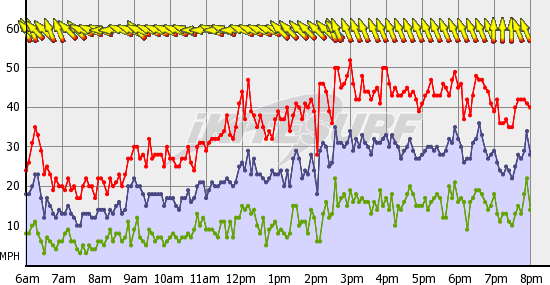 Matecumbe, August 18, 2008 This is some gusty stuff. If you were stationary as most of us are, you would feel these squalls rake over you on a regular basis. Seemed like twice an hour for a long time. Counting it looks like four times per hour or more in some cases. Even if you don't get blow into something hard, the gust lull cycles are a lot of work. Anyone up for rigging for 5 to 52 mph winds, uh what size should you setup? Kites like fairly steady winds, we make up the difference through handling and exertion for winds that are not.
__________________
FKA, Inc. transcribed by: Rick Iossi Last edited by ricki; 01-21-2009 at 09:40 AM. |
|
#2
|
|||
|
|||
|
Let's take a look at some of the new water gear brought to market for 2015 and beyond.
 I just went up on Saturday for the last day of the show and so had to cram a fair amount into the day. This article presents a small sampling of Surf Expo. Apologies for those booths I missed, it is a large show. 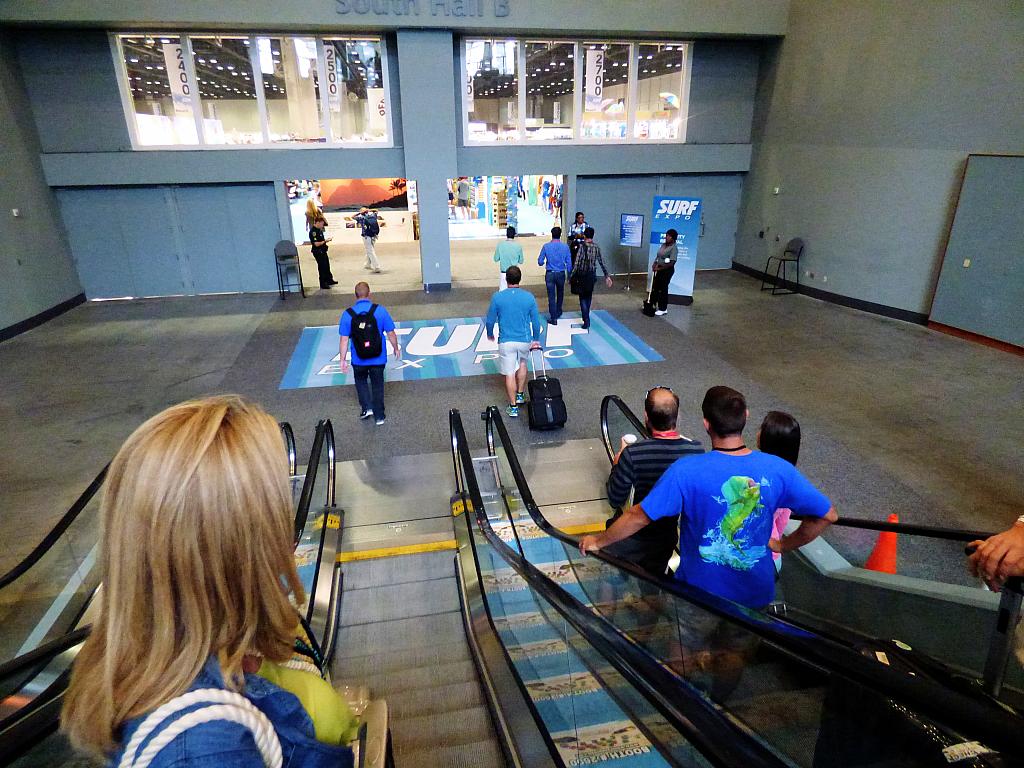 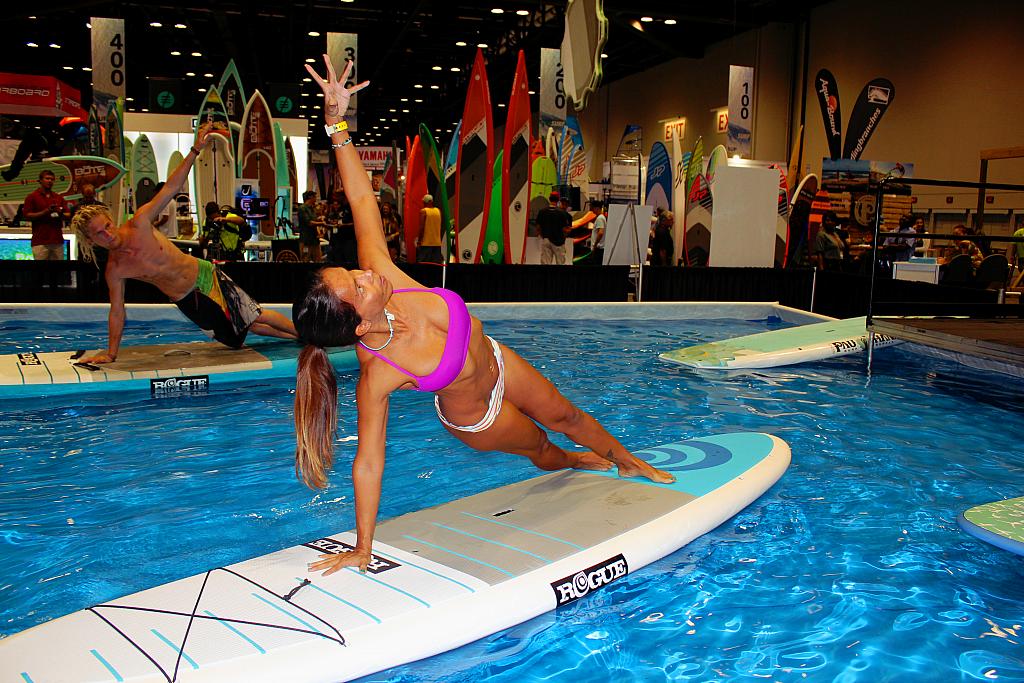 1. Erika Lima was doing some amazing SUP yoga when I walked by the SUP demo pool. So, I took a lot of shots and will be sharing them throughout this writeup. She is a Brand Ambassador with Rogue SUP, http://www.roguesup.com and a SUP Yoga Instructor at SUP Fusion, https://supfusion.com .  Sticking with tradition there are also a lot of runway shots of water wear in this article. Let's start with a look at Axis Kiteboarding from New Zealand. http://www.axiskiteboarding.com  Adrian and Gebi with Axis boards give a tour of the great new products. Here the guys are showing off their new foil board.  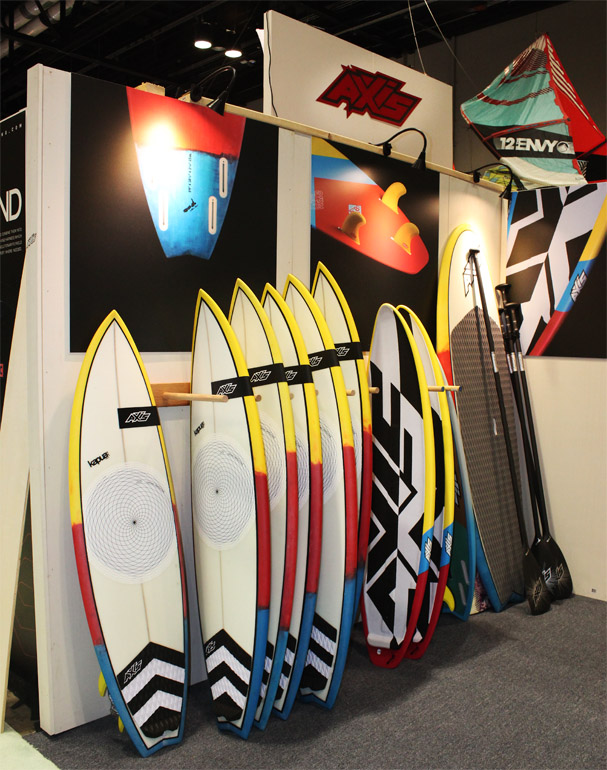 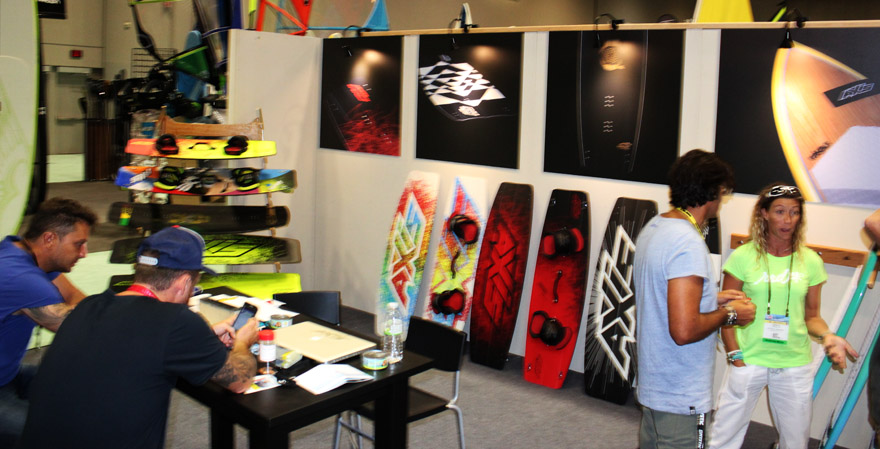 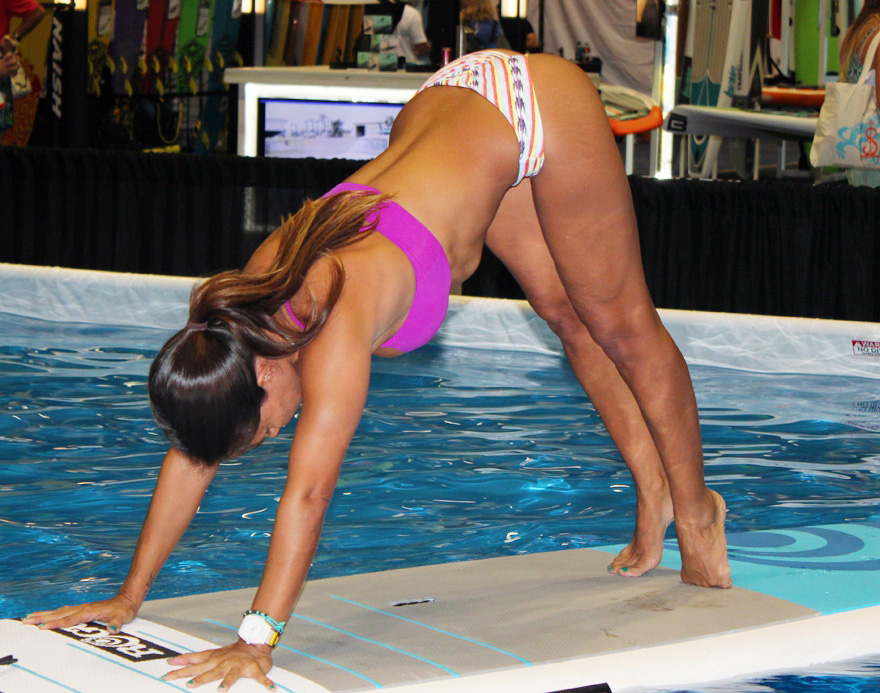 2. Down (water) Dog and looking mighty fine. This is what they have to say about SUP Yoga on https://supfusion.com/ : "Paddle Board Yoga is a variation of stand up paddle boarding (SUP), combined with yoga, which originated in Rishikesh, India. The sport combines hatha yoga and vinyasa yoga asanas, or poses, all whilst floating on a paddleboard.SUPing is a great way to improve balance, gain core strength, and connect with nature Practicing yoga on a SUP brings a whole new perspective to being fully present in the moment Asanas (yoga postures) create a new challenge while floating, requiring full awareness, acceptance of mother natures mood."   Swinging by the Slingshot,http://www.slingshotsports.com , booth to see what Neil and crew are up to. 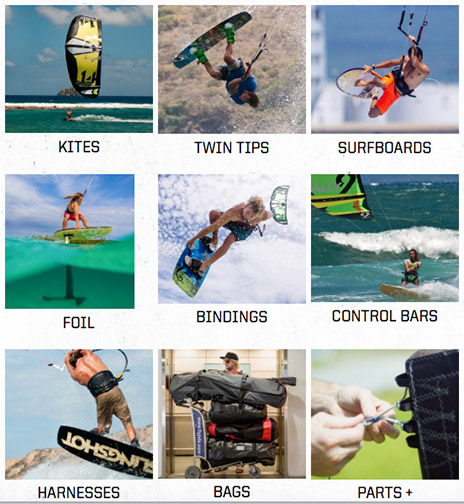 Offering the full line up of action water gear. You can see videos about much of Slingshots gear lineup for 2016 at: https://www.youtube.com/playlist?lis...A8FC55B950679A 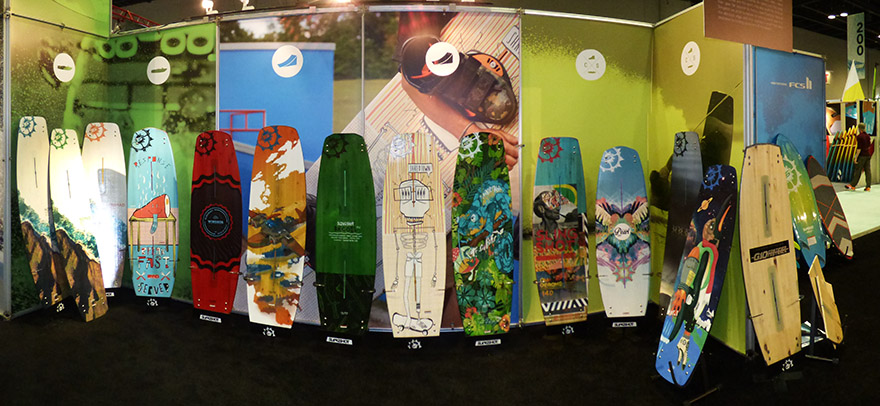 Lots of twin tip boards to choose from. A look at what Alex Fox and Sam Light are up to down in the BVI with SS gear. https://www.youtube.com/watch?v=Dy-_Rm83y5g 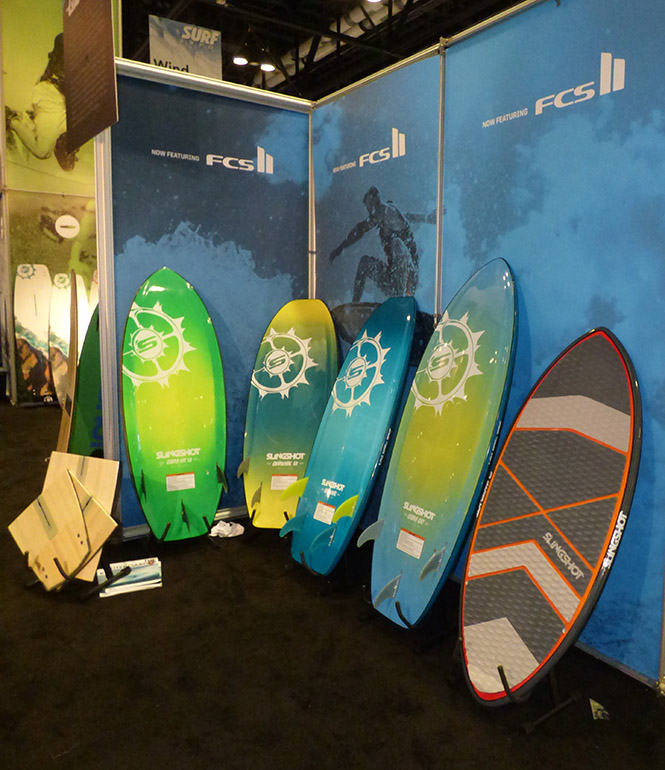 Fun wakesurfers too 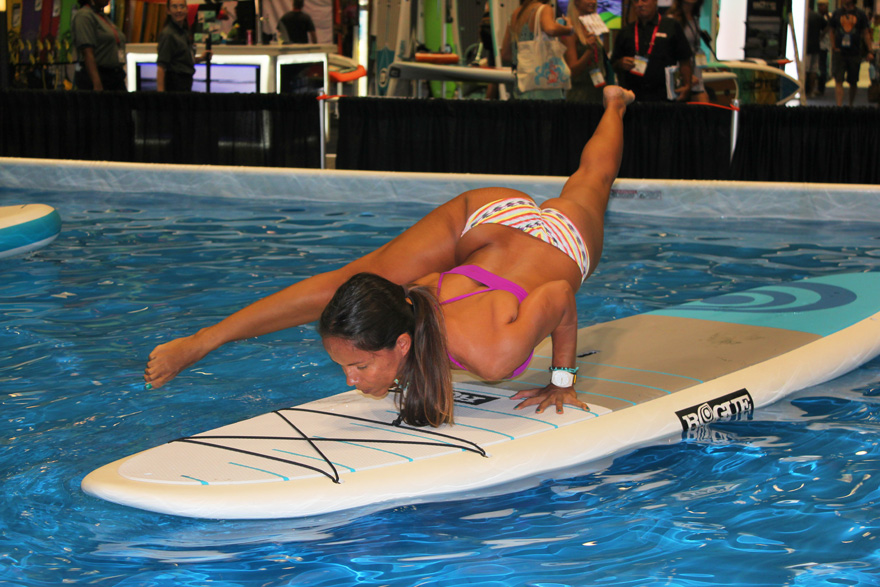 3. Not only is this incredibly hard to do, I understand it can improve TV reception?   Lightwave Dave of Lightwave Kiteboards, http://www.litewavedesigns.com , shows off his latest board shapes for 2016. 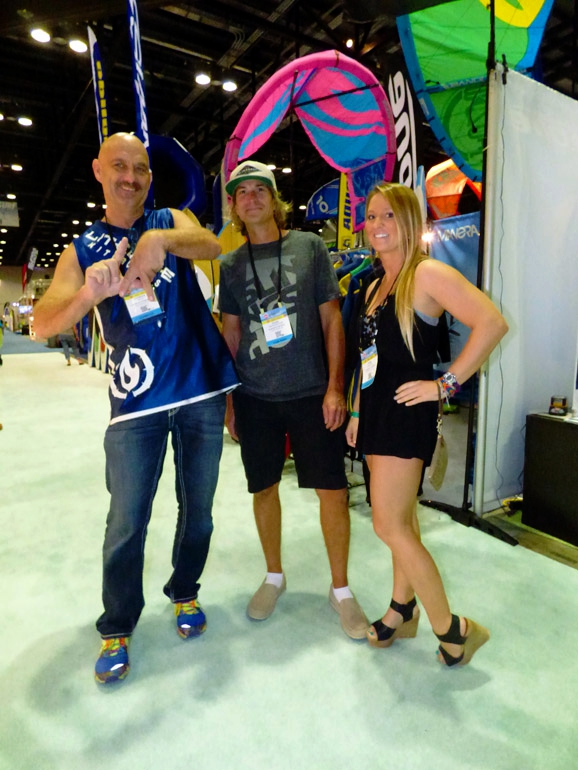 Communicating in the isles with Pete and Ryan  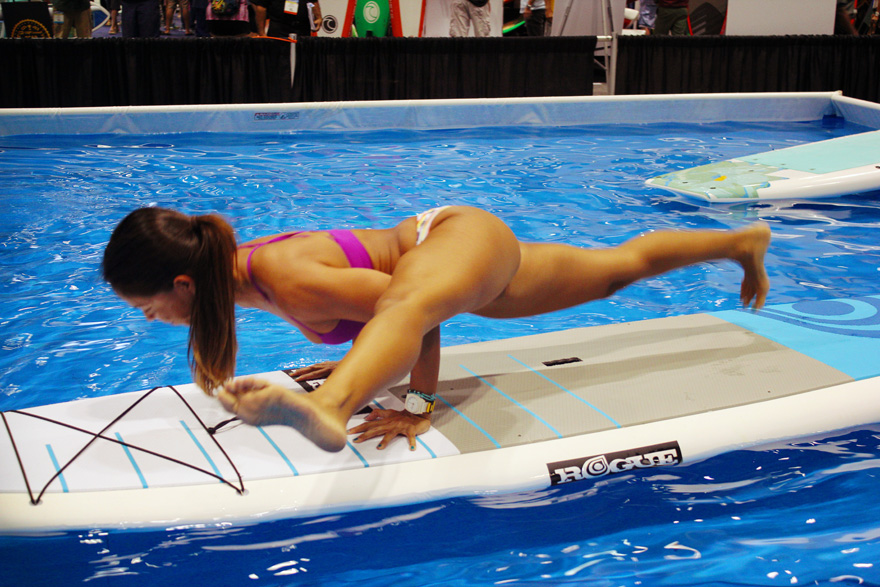 4. Impressive poise, strength and balance on an unstable, moving platform.  The lady on the right runs this model troop and has done for sometime. She has the best runway walk that I think I have seen. 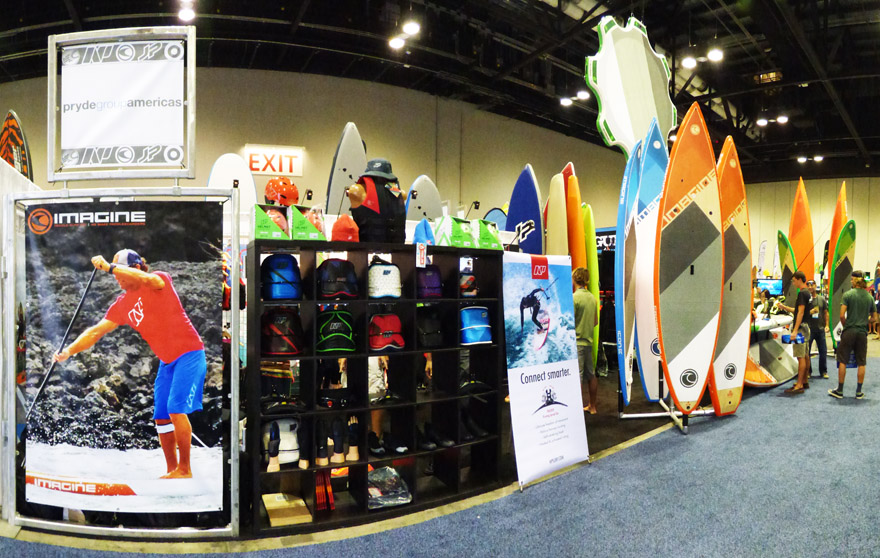 Let's see what is going on from some of the Pryde Group Americas brands.  I was fortunate to be able to attend the PGA Dealer Meeting on Grand Bahama this summer and got a closeup look at the product offerings for 2016. You can see some of the boards in the lineup here.  Group shot in front of a massive inflatable SUP board for a couple dozen or so?  Another group shot, this time from the Lucayan Grand in Port Lucaya in the Bahamas.  You can see write-ups on Cabrinha kite gear at the following links: 2016 PGA Bahamian Product Presentation I - Great Water Gear, Rum & Bush Crack http://fksa.org/showthread.php?t=12348 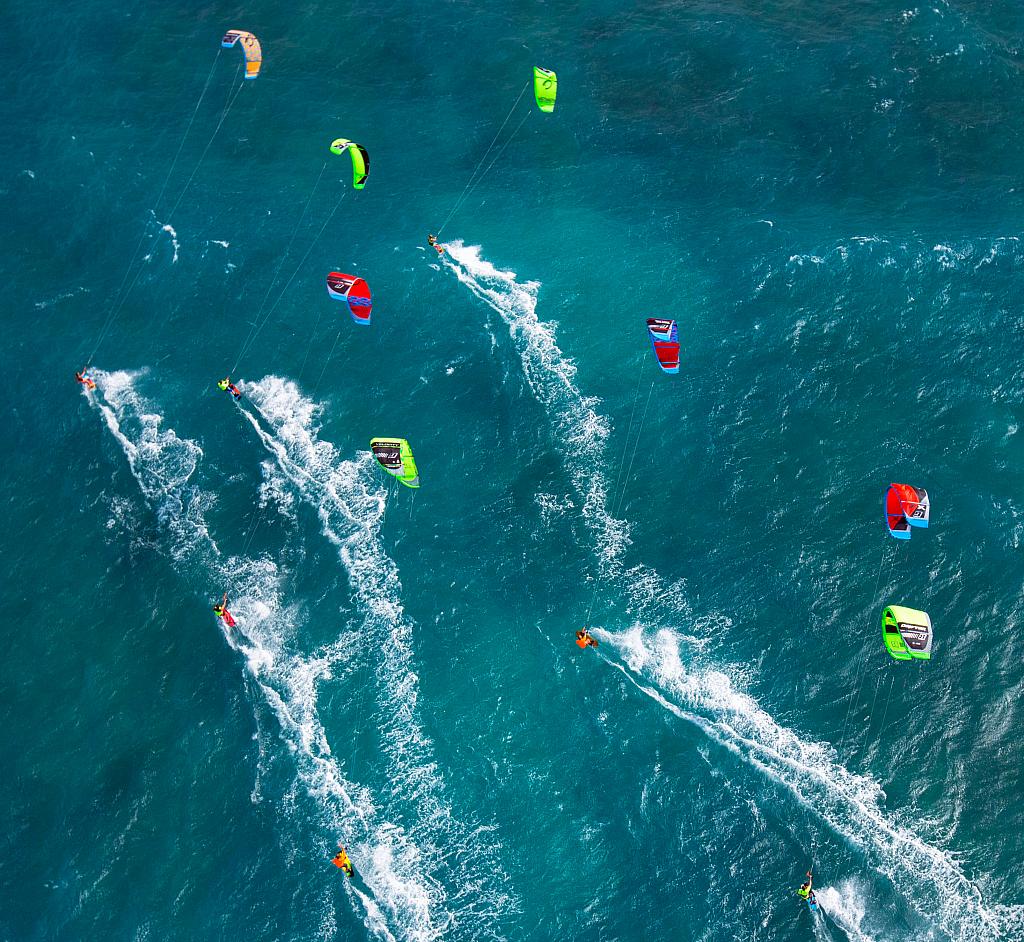 2016 PGA Product Presentation II - Double Agent Hydrofoil! http://fksa.org/showthread.php?t=12350  2016 PGA Product Presentation III - Kiteboards http://fksa.org/showthread.php?p=51763#post51763  https://www.youtube.com/watch?v=QZKnYmvzUTQ https://www.youtube.com/watch?v=mxFT99hSaC8 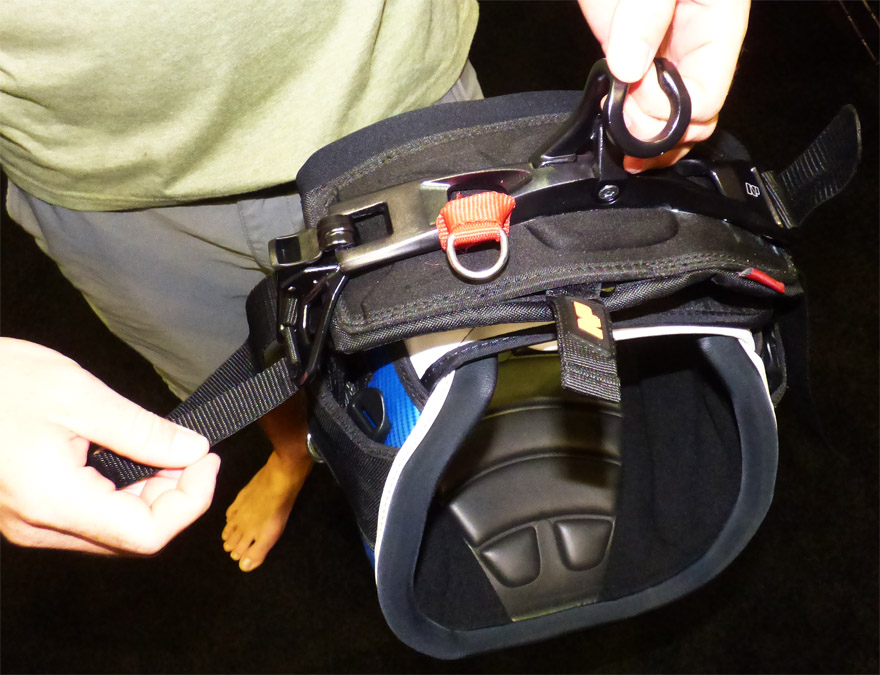 Evan shows off some of the features of NP's latest harnesses. 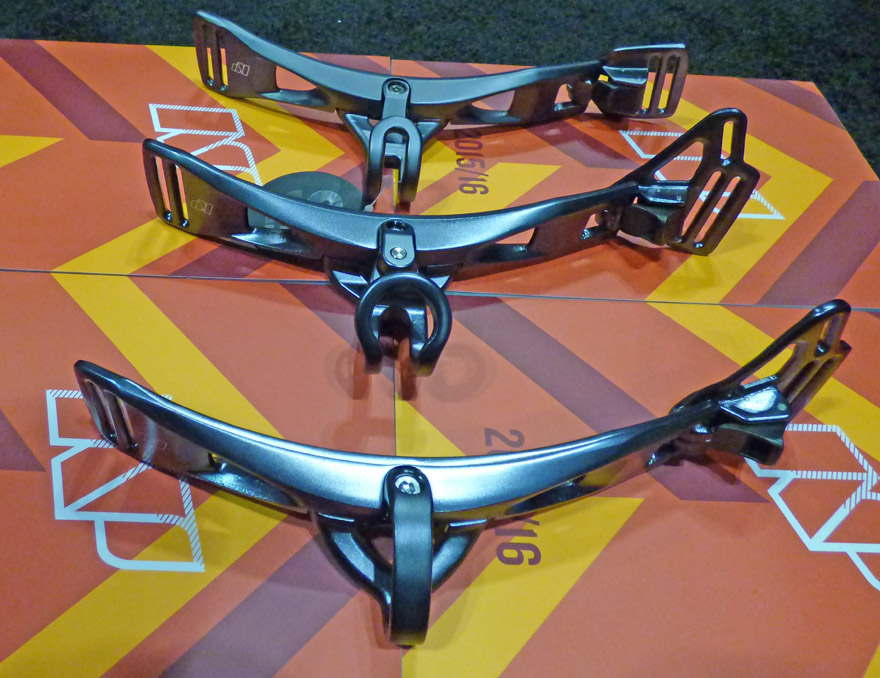 Introducing the S-1 spreader bars to improve the ease of your riding. More at http://www.npsurf.com/products/sprea.../overview.html 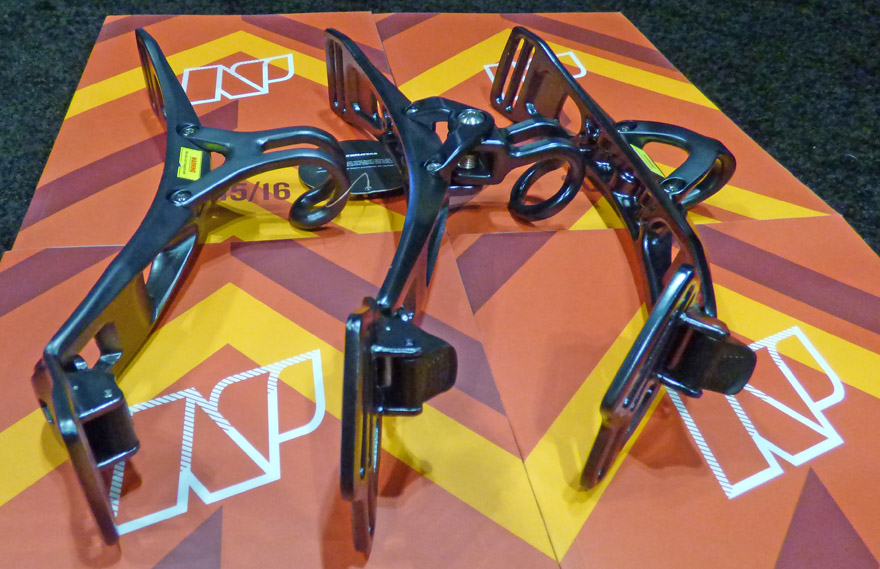 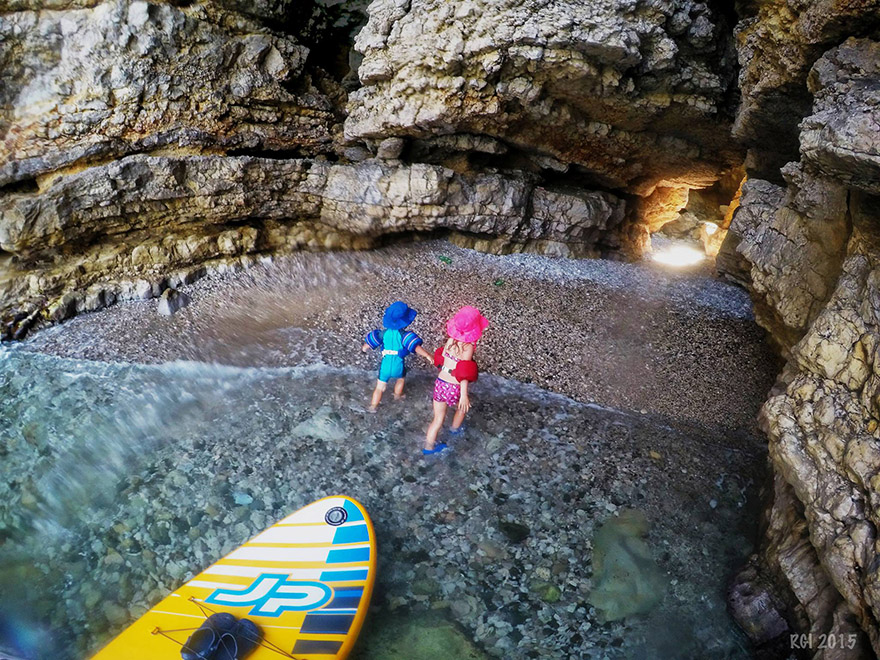 I had some remarkable hands on experience with two of the JP-Australia inflatable SUPs in Italy. The portability and stability allowed us to take the kids on explorations along the coast to caves and roman ruins outside Sorrento.  Gary, Kent and Sergio of PGA  Wrapping the inflatables up around a core can improve longevity and these guys were just standing around so they filled in. We'll take you out the next calm day, promise! 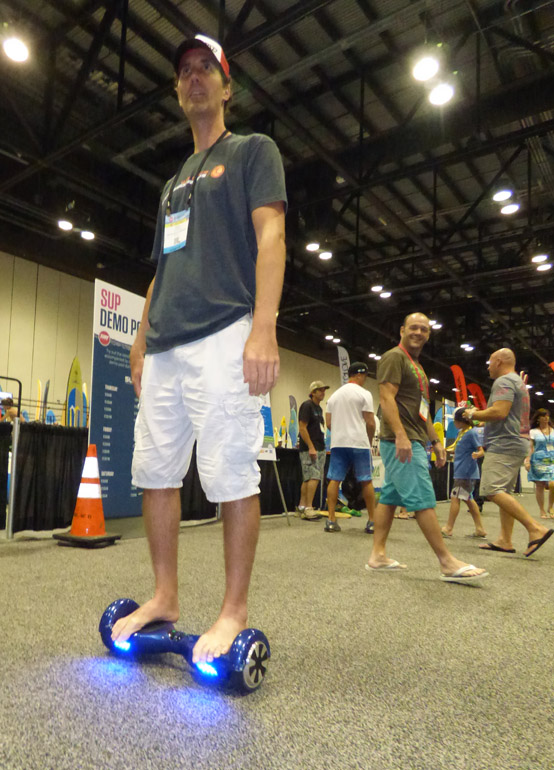 Todd of Cabrinha tools along on this high tech Flinstone's gadget 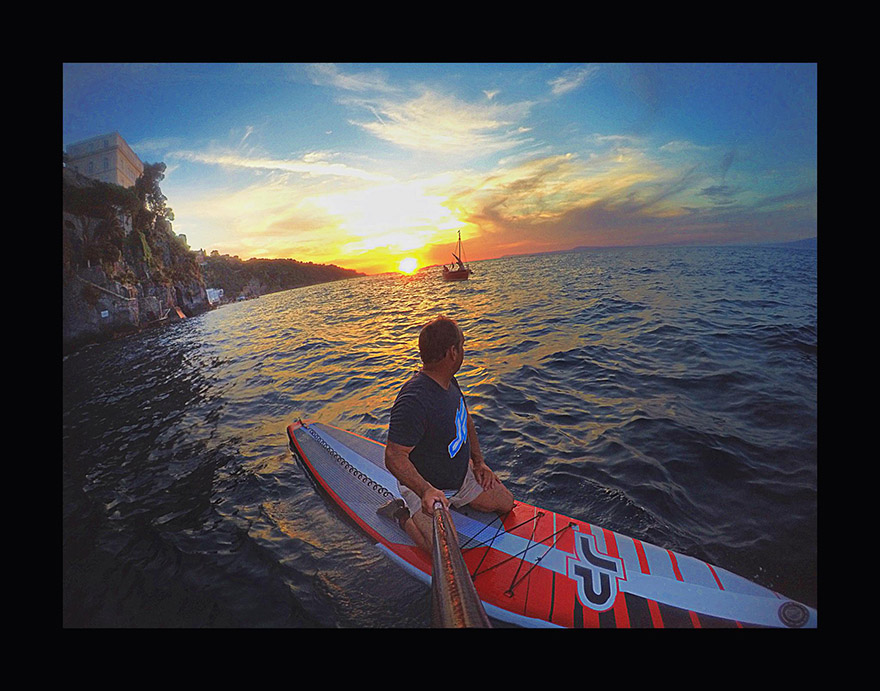 Sunset off Sorento  The Kiteboarder Magazine shot video coverage of Surf Expo 2015 and the kiting products presented there. You can see the videos at: http://www.thekiteboarder.com/2015/0...duct-previews/ 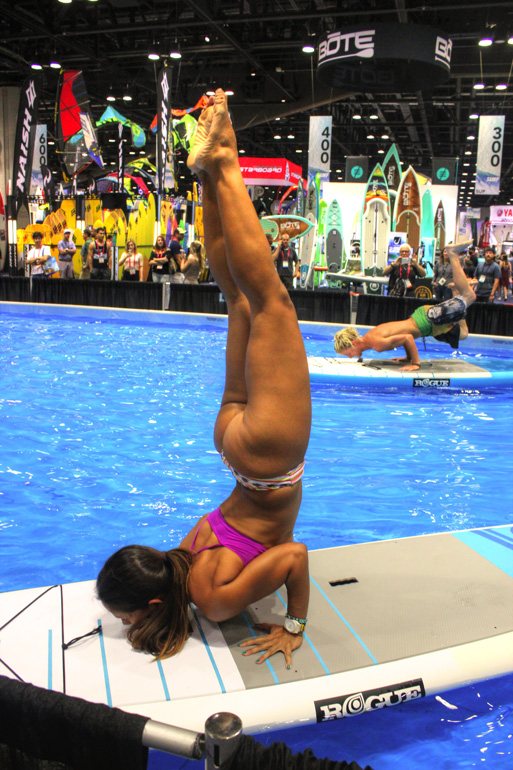 5. Erika making something really difficult look easy and beautiful at the same time.   GoPro is present in force as always, lots of great camera gear to bring the action home from almost anywhere. https://www.youtube.com/watch?v=chJ0...ature=youtu.be Here is an video going over the new program.  GoPro has come out with an incredible Awards program where photographers potentially get cold cash and glory for the content they post up to the tune of $5,000,000.00 USD per year.  GoPro has also introduced the compact, self-contained waterproof "Session" camera. 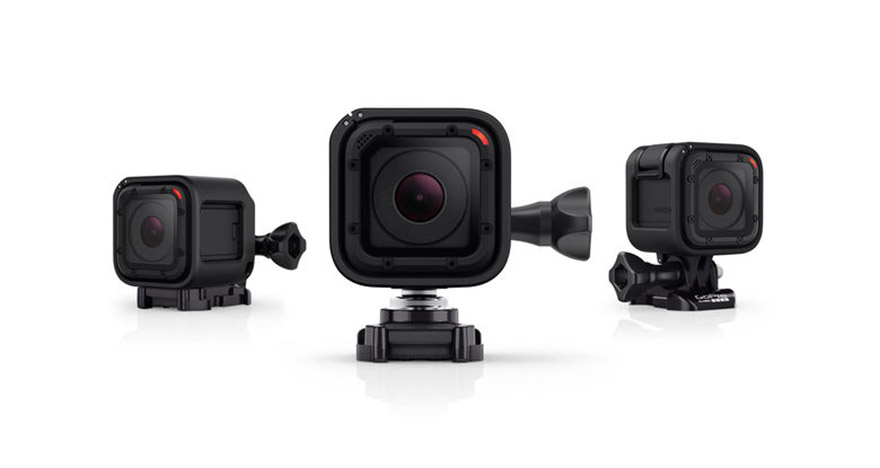 More at:http://shop.gopro.com/hero4/hero4-se...CHDHS-101.html  6.  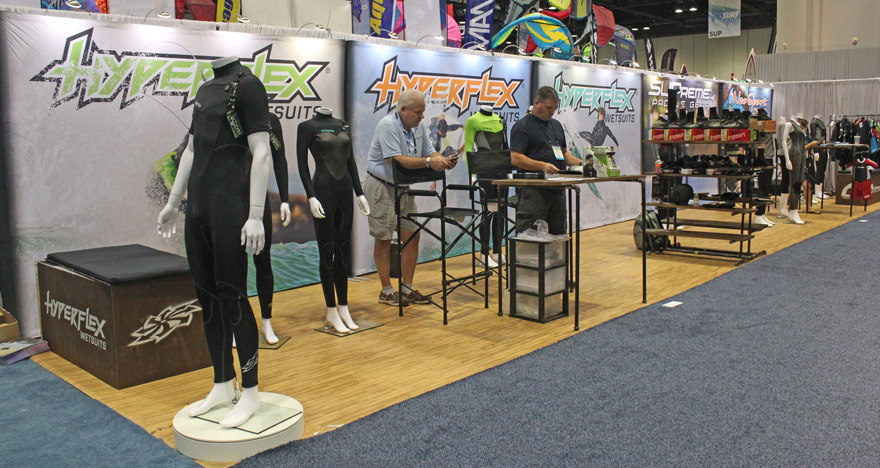 Hyperflex bringing superior wetsuits to whatever watersport you might choose to pursue. More at http://hyperflexusa.com and http://neosportusa.com . 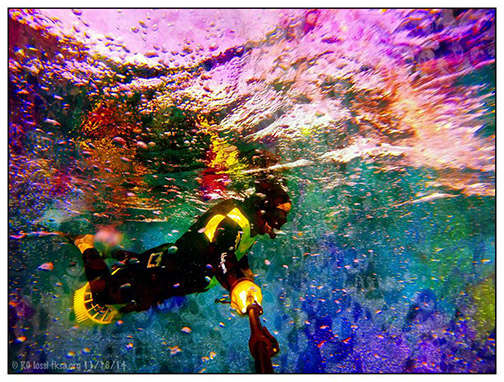 Heading out for some colorful free diving with my NeoSport Wetsuit a related brand to Hyperflex.  Free diving down to checkout a large goliath grouper in my Hyperflex 5 mm suit.  Checking out a wreck. When you are free diving the last thing you need for efficient breathed drops is to be cold. This Hyperflex suit takes care of that very well and in comfort. 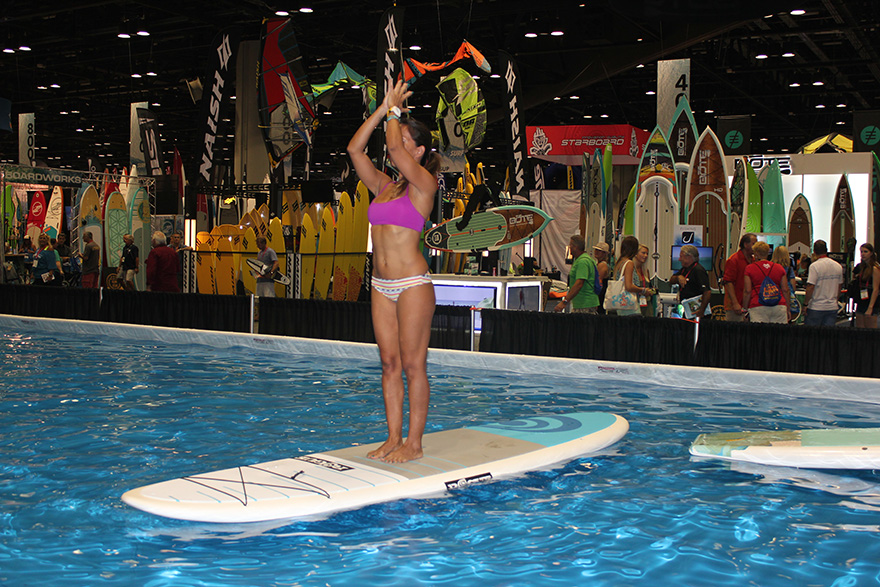 7.  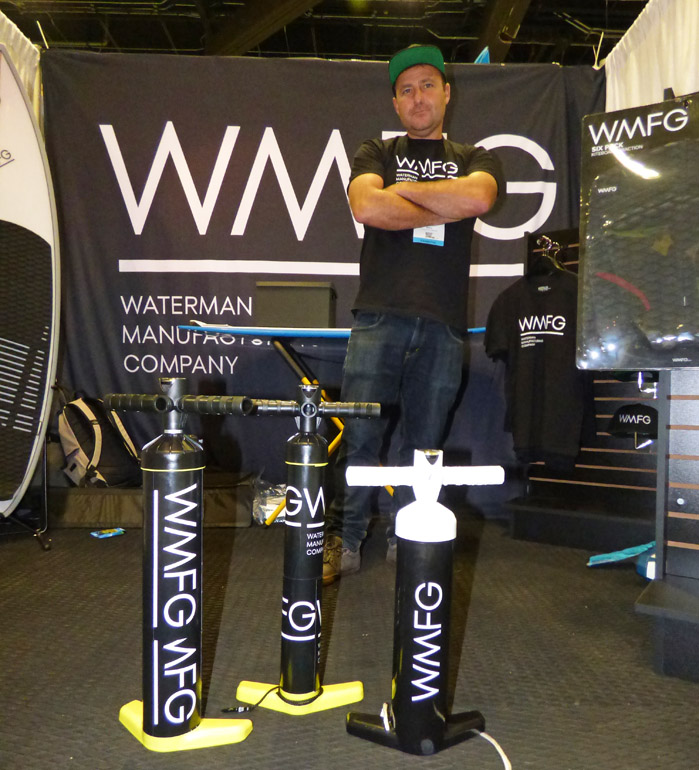 Matt Aiken is bringing innovative new products to market to improve your riding experience through WMFG Manufacturing, http://wmfg.co . He has these pumps designed with ergonomics and function in mind for kiteboarders and inflatable SUP'ers. Matt was the former SBC Kiteboard advertising sales manager and knows the kiting market very well. Kitesurfing Magazine, did an overview on WMFG at https://kitesurfingmag.com/wmfg-a-brand-is-born/ .  Rick gave me one to try. I found the pump fast and easy to use with good ergonomic considerations in how it is setup. 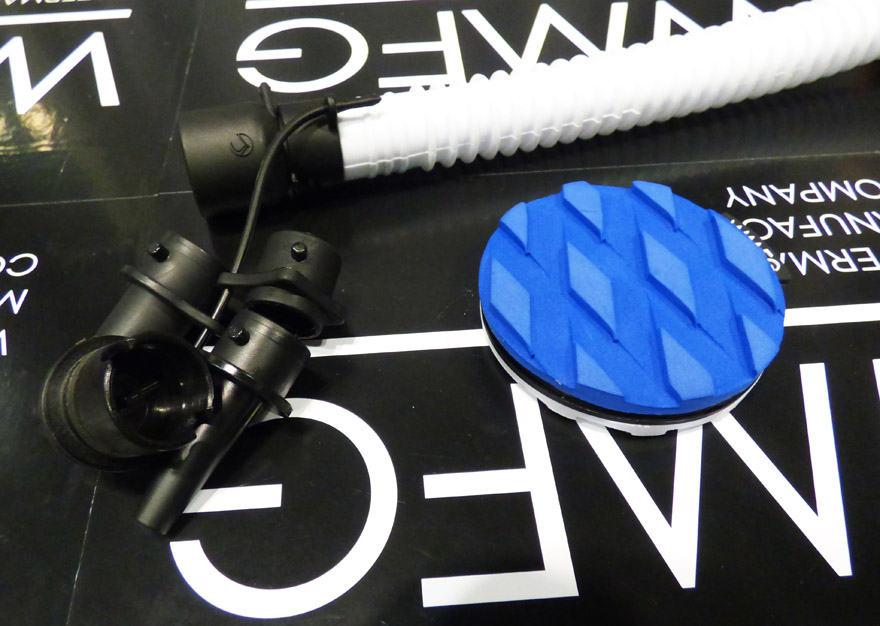 Rick has adaptors for about any kiteboarding kite you might think of on here. 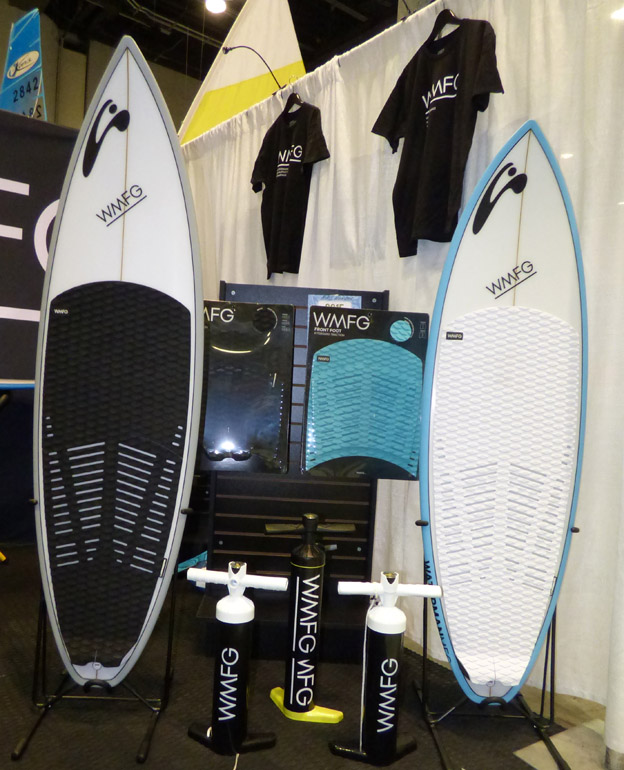 He also has these nice deck traction pad segments that can be assembled in various configurations.  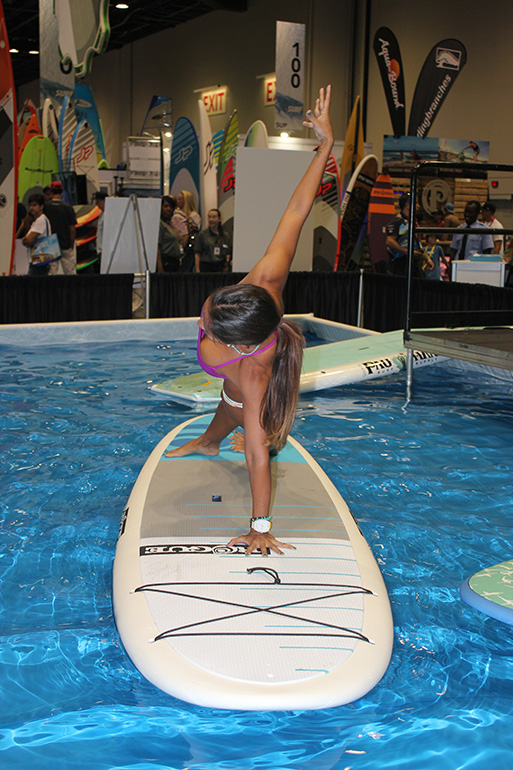 8. 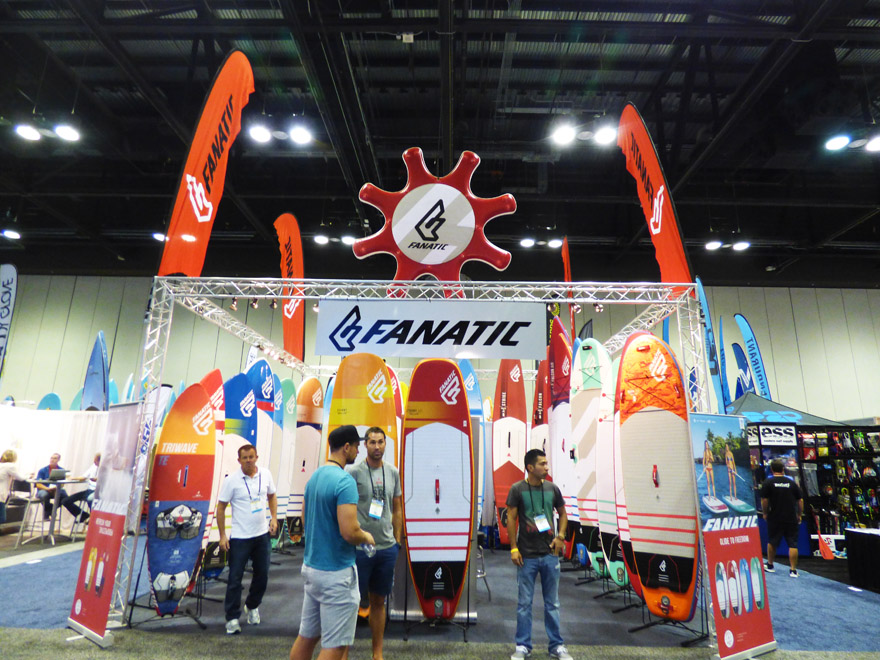 Ed with Fanatic SUP, http://www.fanatic.com/sup/ ,is bringing lots of great new boards to market this year.  Fanatic put together a series of overview videos of the products for 2016 at: https://www.youtube.com/playlist?lis...w5y1F-Bd_QFKTi 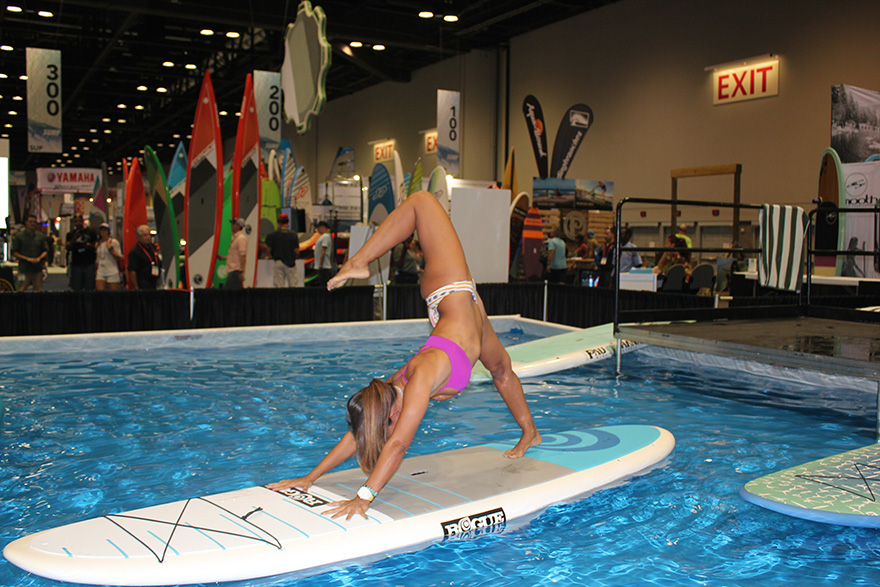 9.  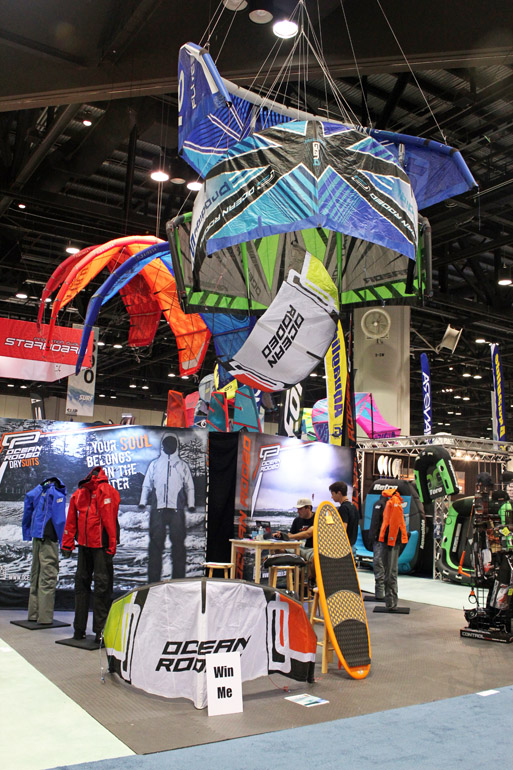 Ocean Rodeo for the new year. Ocean Rodeo has assembled videos on the product line at: https://www.youtube.com/user/oceanrodeo  10.   An inflatable windsurfing sail using kite technology? What will they think of next? Apparently this concept comes from North. They may be working on an inflatable variant which attaches to a paddle. I had trouble finding something in English about this product but came across the following in German. "Admit it looks a bit awkward as the windsurfer fiddling with the new rig. North Kiteboarding, one of the biggest surfing brands in the world, has entered with an inflatable Rig uncharted territory. With the first "inflatable" sailing on the market, the manufacturer wants to fill a gap. Especially newcomers have on the water known as their difficulty with a quite heavy windsurf kit and can do so keep only partially under control. And even professionals know that a rig is not really portable." http://www.funsport.de/magazin/new-d...-rig-der-welt/ I did find and video and in English however! https://www.youtube.com/watch?v=IB-xXiXhM1M 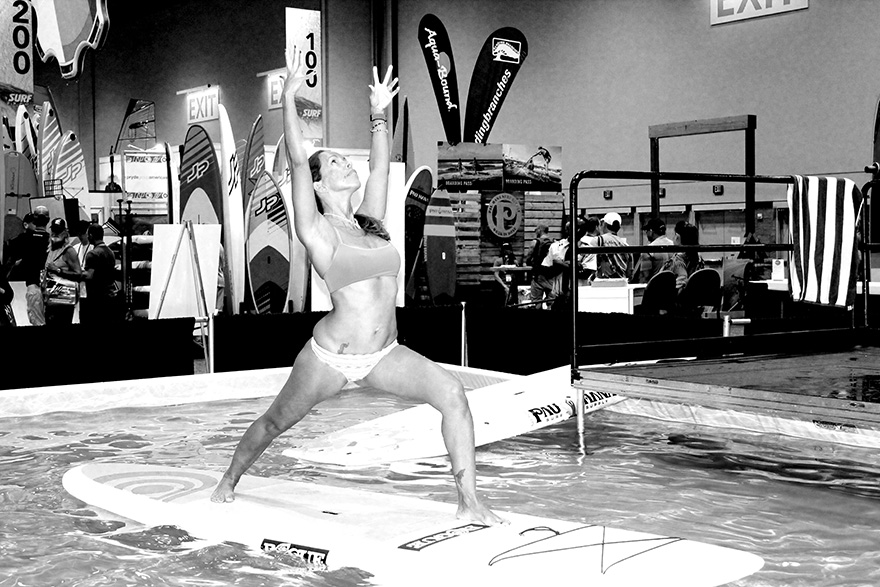 32.  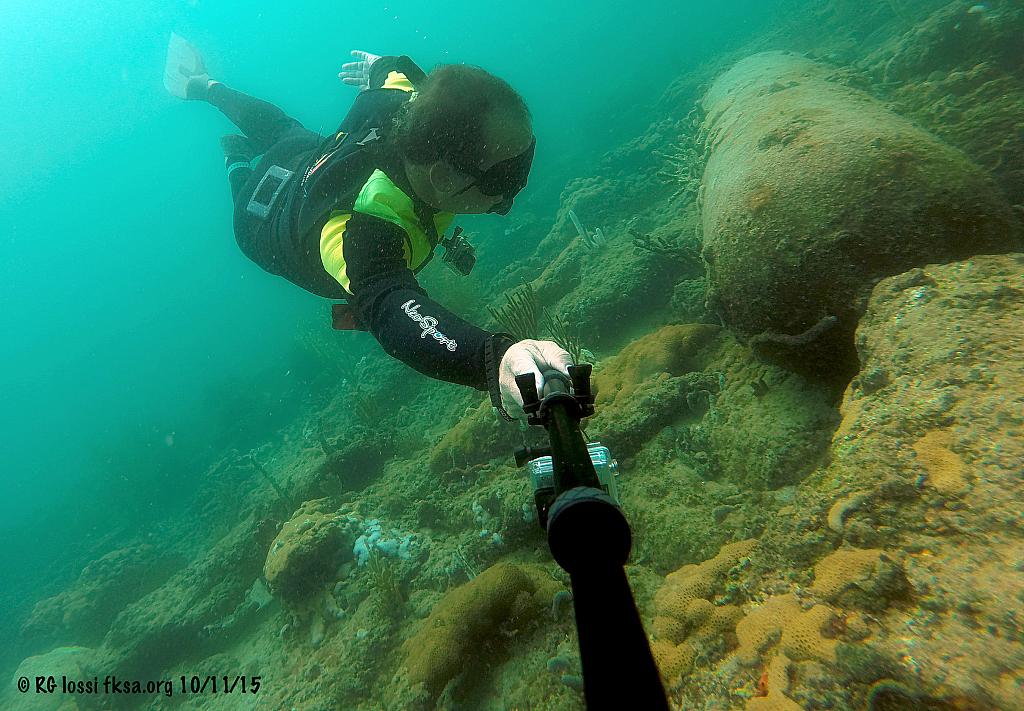 Checking out what may be a concrete WWII practice bomb using the Go-Scope.com monopod. I am also wearing a great wetsuit from NeoSport. Here is the Go-Scope team, http://go-scope.com, with a lot of exciting new products for GoPro and other action cameras.  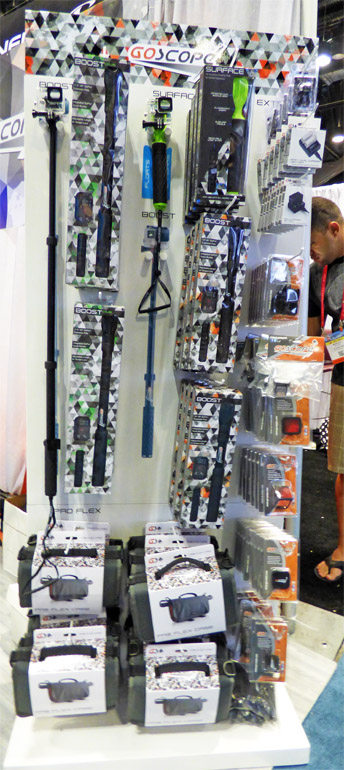 They put out a lot of products at some excellent price points. You can see an overview in the video below:  https://www.youtube.com/watch?time_c...&v=EIYGztmjVdw 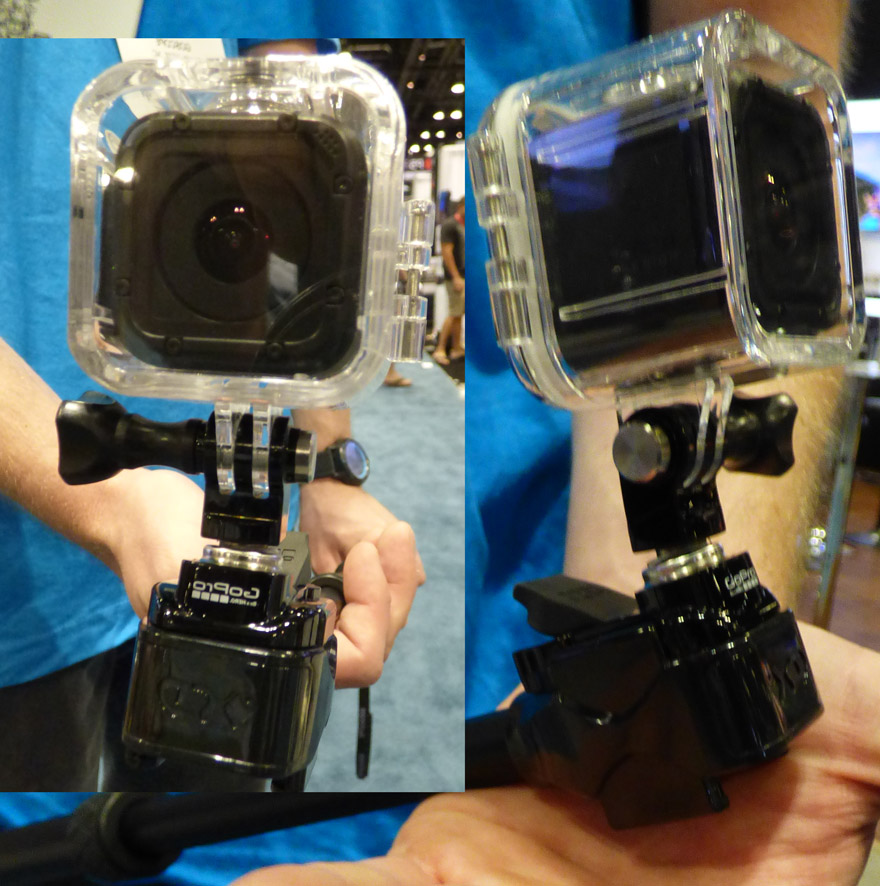 This is the first one of these that I have seen. It is an underwater housing which increases the service depth of a GoPro Session camera from 35 ft. to 180 ft. of water. 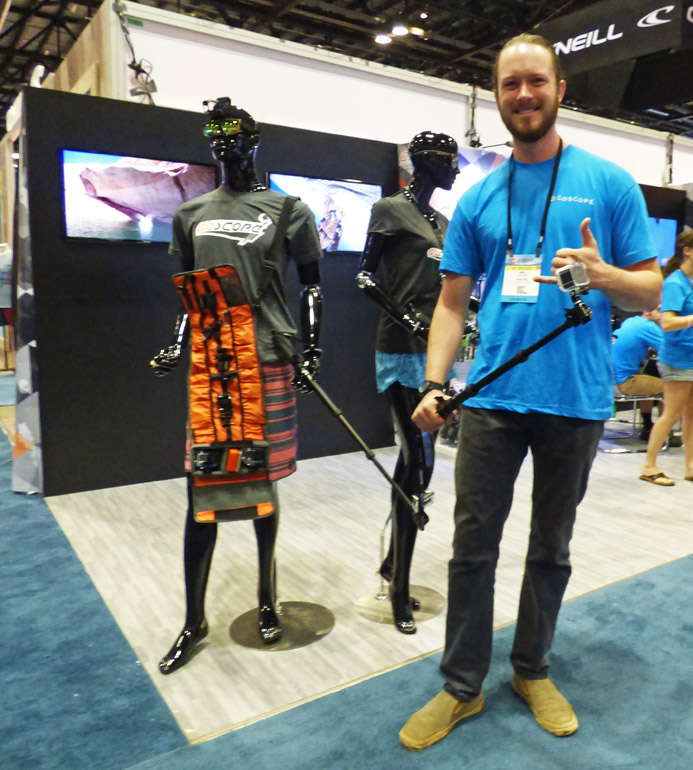 I really like this monopod. They have this great built-in track allowing two cameras to be mounted in a low profile configuration. I like to shoot fore and aft when I go through caves and wrecks while diving. This setup makes it even easier with lower drag. 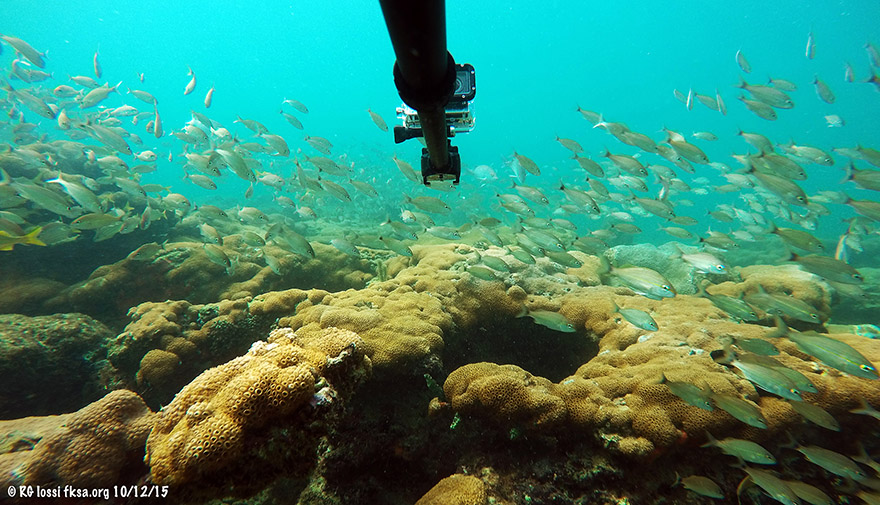 I am shown here using the Boost Plus monopod.  20.  Slack-liners unite! 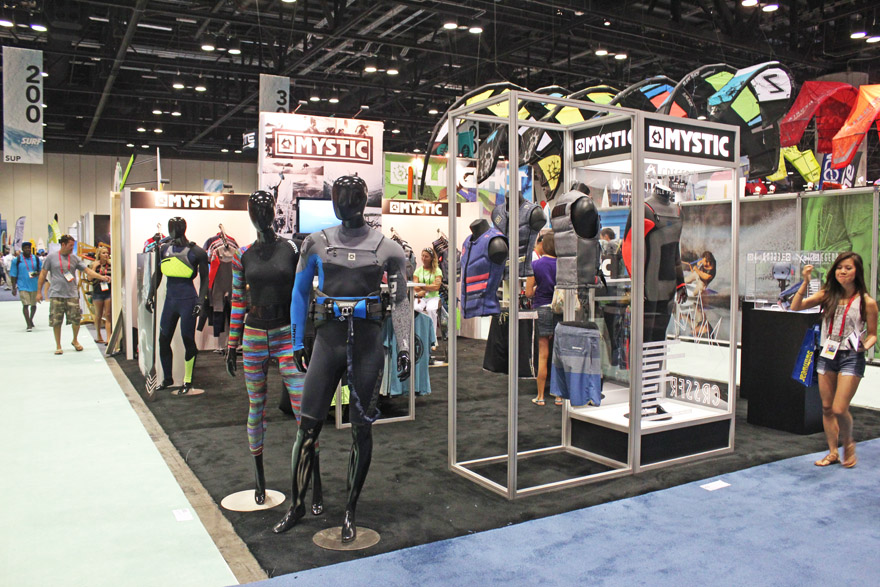 Mystic, http://www.mysticboarding.com/ , for 2016. You can checkout the Mysticboarding channel on youtube at: https://www.youtube.com/user/MysticboardingVideos  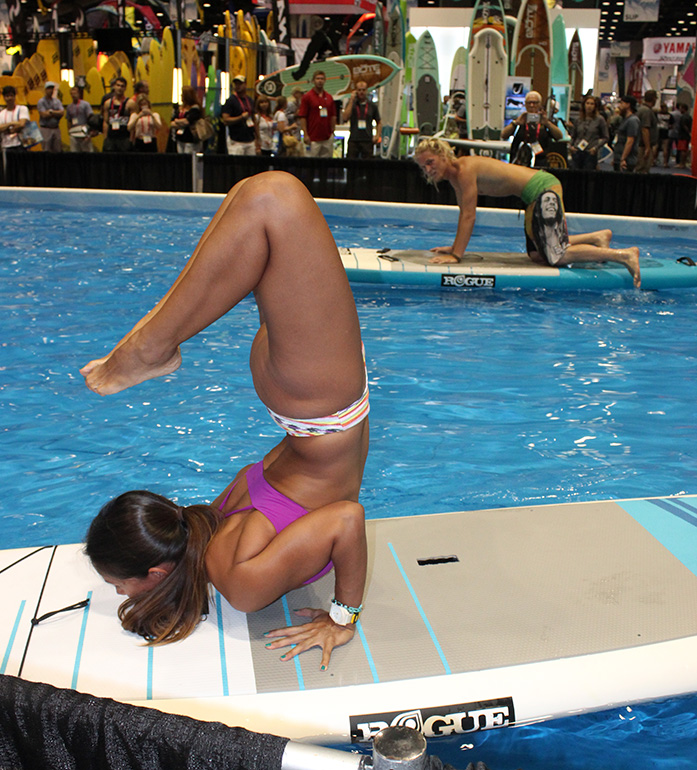 21.  Billy Blackman and his lady tour the show.  John Bryja brings a new kiteboarding magazine to the community, https://kitesurfingmag.com !  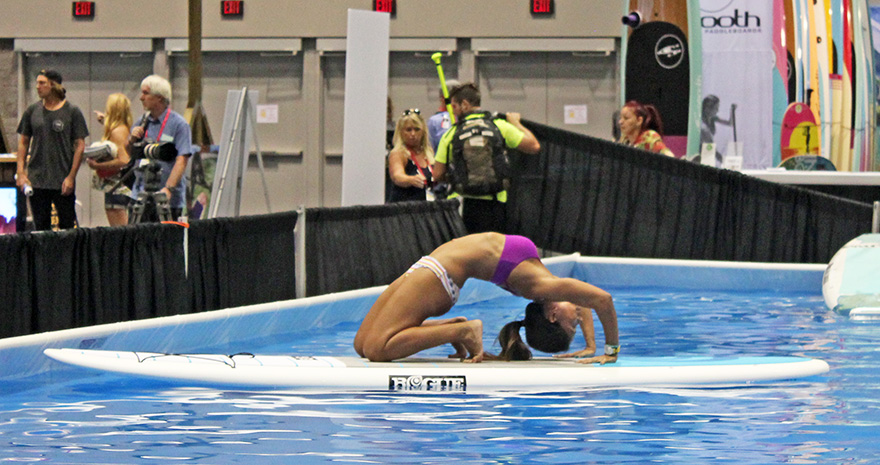 22.  Mike Hirooka up from Miami and https://www.facebook.com/Hirooka-Sur...3401252691280/, checking out the show with his lady.  34.  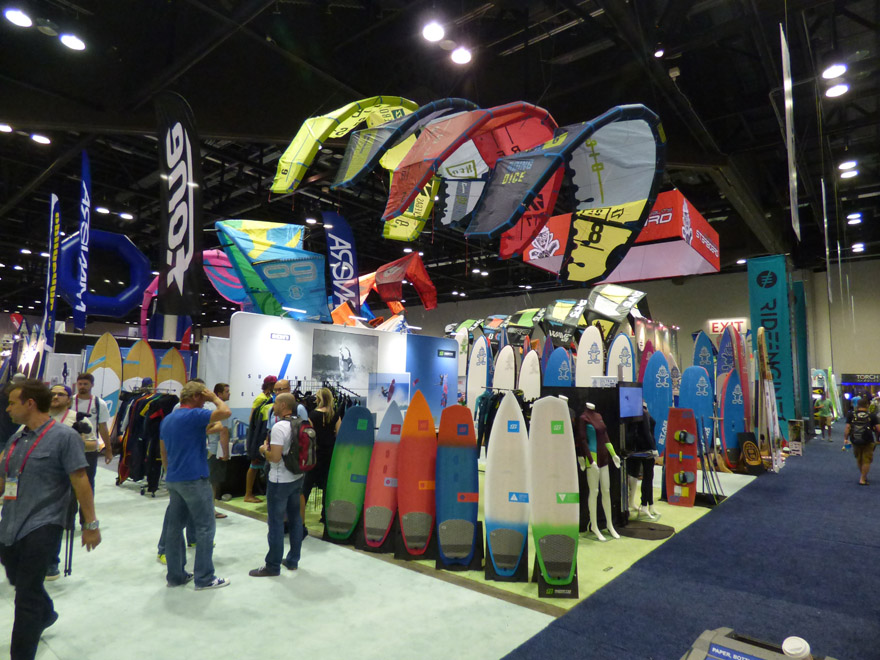 North Kiteboarding, http://www.northkiteboarding.com North has this interesting video on their site https://www.youtube.com/watch?time_c...&v=nyBPo7zTEEE  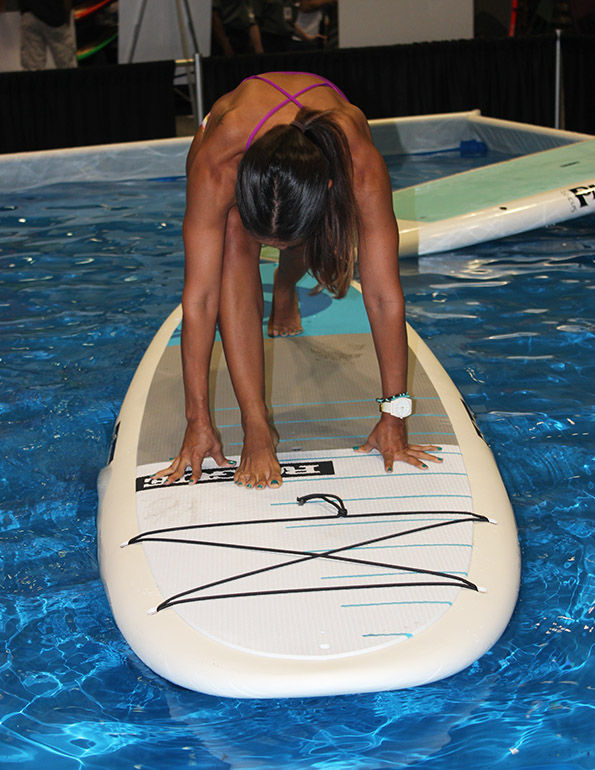 23.  Dave Troup with XENSR brings in some hot tech from the the northlands. 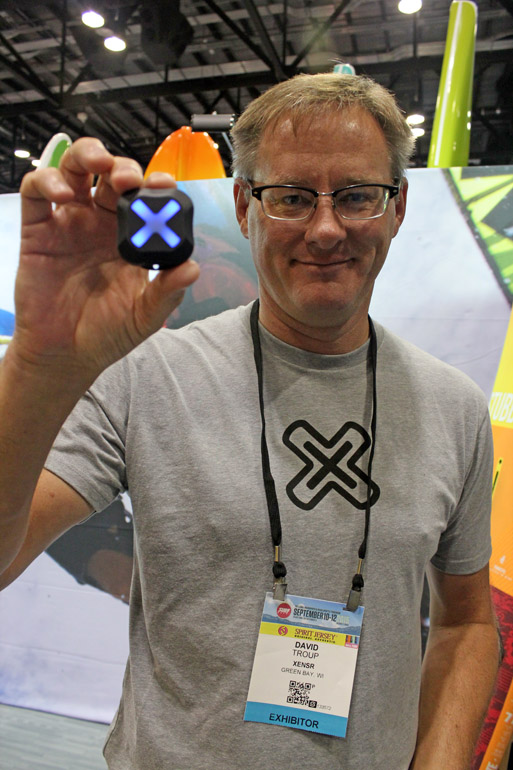 Dave and his new digital baby, the XENSRAir, http://www.xensr.com/ 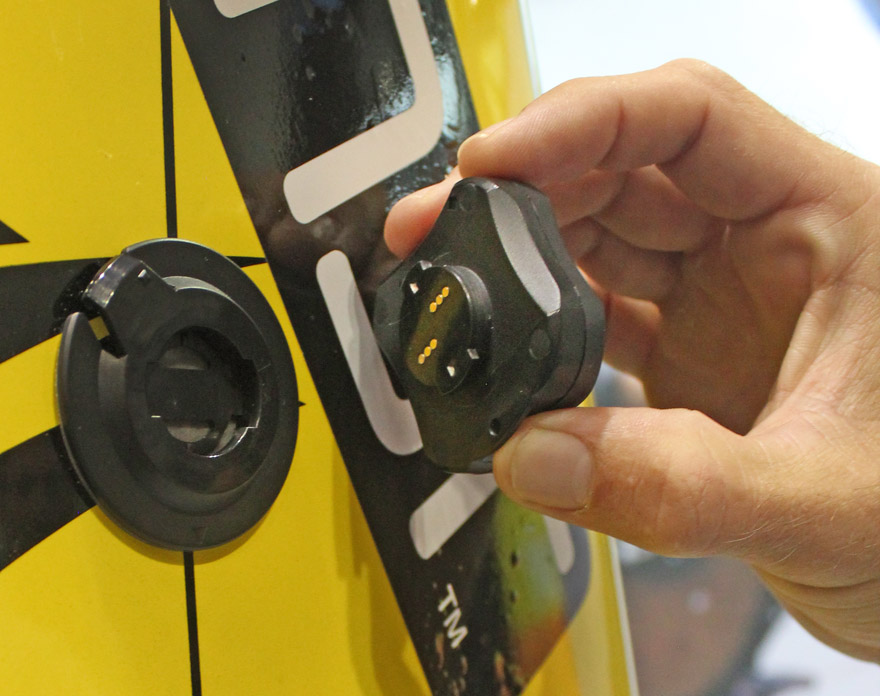 A closer look at the XENSRAir and mount.  Aside from providing tons of info about your sessions, this might be the end of lost boards?   24.   28. 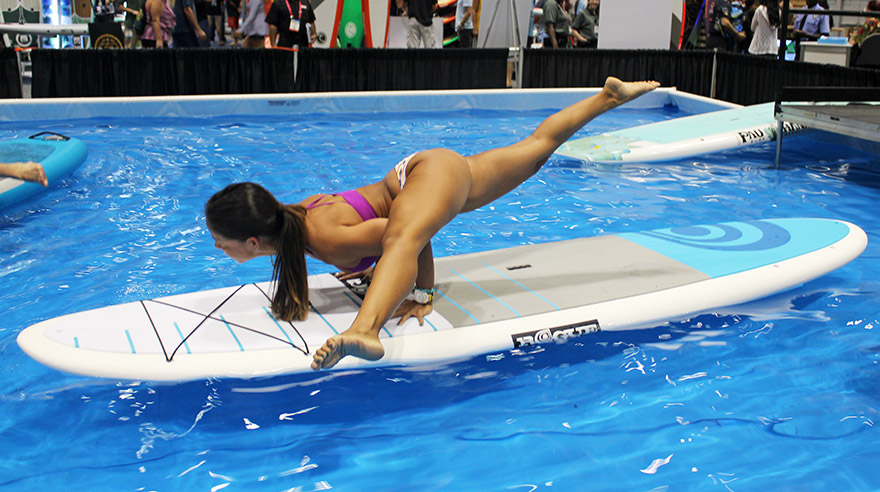 Here is an interesting new product that is to come to market in the near future, a stealth flotation aid. For folks that don't want to be seen using good sense when out on the water but will have to accept responsibility for thinking ahead all the same? This is the Lifeshirt by Aegis, http://www.lifeshirt.com , a low profile pfd. These come a CO2 inflator which can be set to go off automatically, a automatic light and comes in a wide varieties of styles for men, women and children. 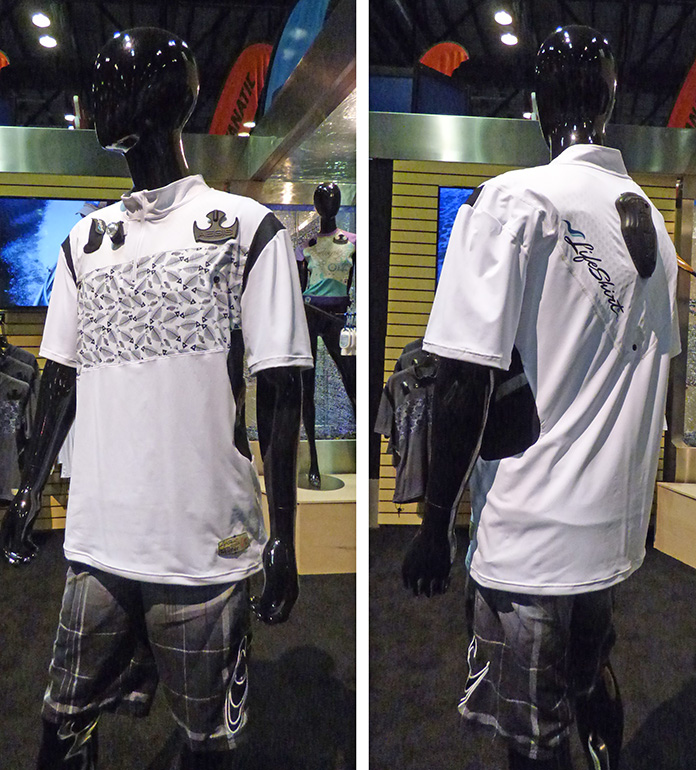 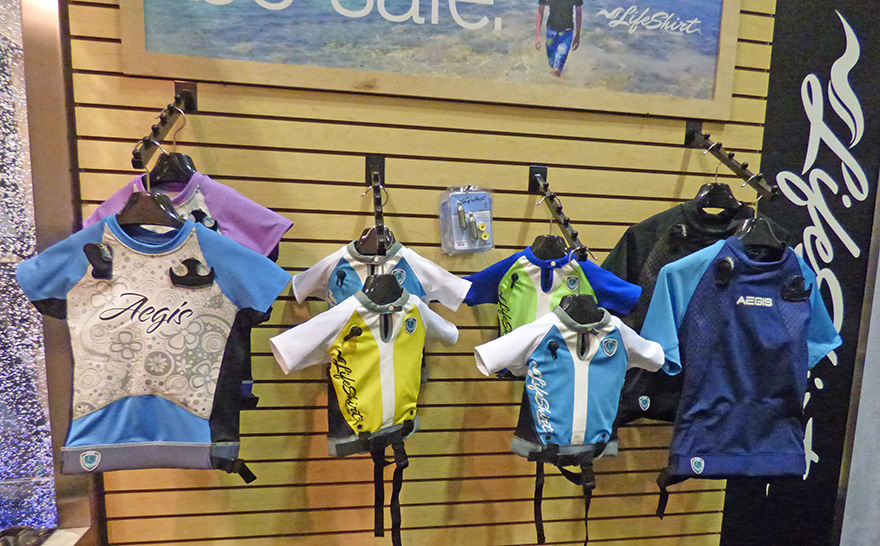 For children https://www.youtube.com/watch?v=1VDtw_8yRss 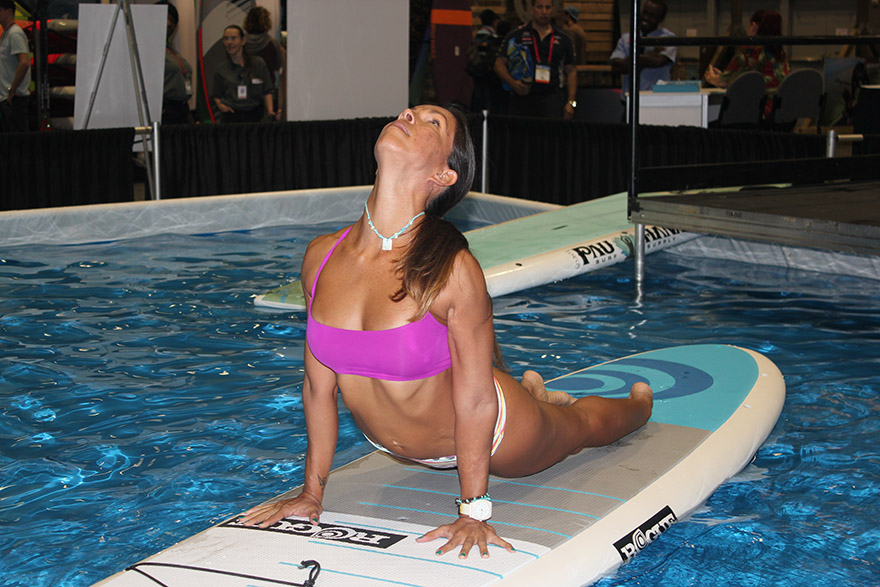 40.  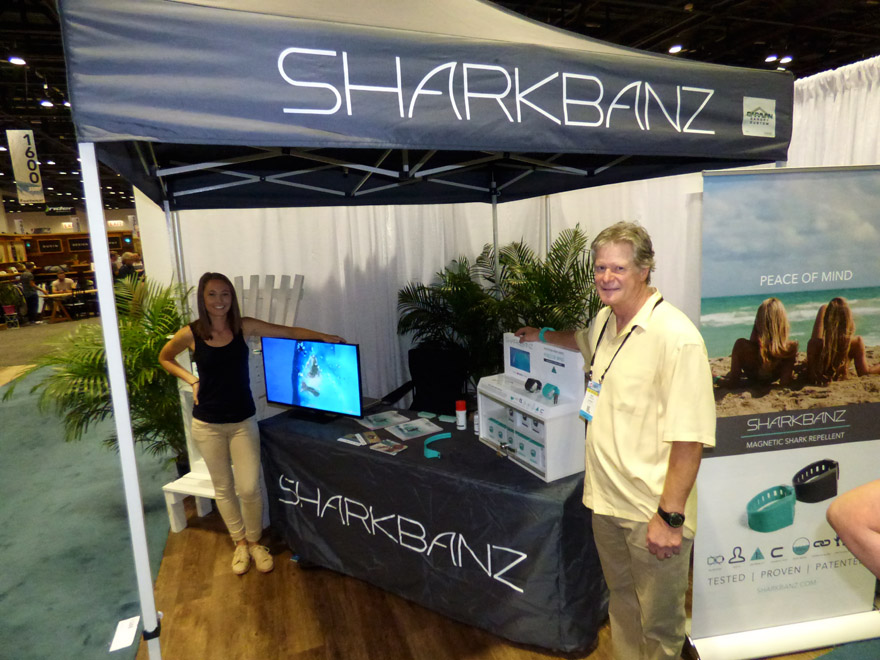 Sharkbanz, http://www.sharkbanz.com, a passive device advertised to repel some sharks through the use of rare earth magnets to interfere with the animals lateral line performance. I saw this product shortly after it came out. The video showed one shark making a pass and that was it. I moved on. About a year later I saw the "Bernie" video and thought, well there is a lot of repeated performance in this clip. So, I bought one to put on and forget about. I kite around sharks and prime feeding activity not uncommonly. They will usually leave you alone but not always. Plus once you go into the water and off your board your risk of a negative encounter goes up. https://www.youtube.com/watch?v=iRIsEl4hAl8  We still didn't have any wind at this point so I took it out diving. Putting the shark band on the end of another product reviewed in this writeup, a Boost Plus camera monopod from Go-Scope.com. I swam around for quite a while, found a single nurse shark who seemed to be totally unaware I was almost ironing its lateral line with this gadget. Speaking further with the Sharkbanz folks, it was indicated that they never had much luck with often sessile nurse sharks either unlike some free swimming sharks people usually worry more about. 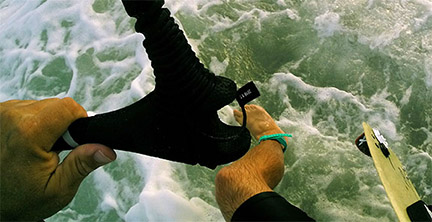 The wind finally came back to South Florida, I am still riding around dusk, inlets with some sharks, so I figured why not put one on? If my foot gets bitten, like a surfer riding 4 miles to the north of me yesterday, then I will know it doesn't work on yet another species. Then again, it might help? The bluefish migration may have been a bit thicker up that way?  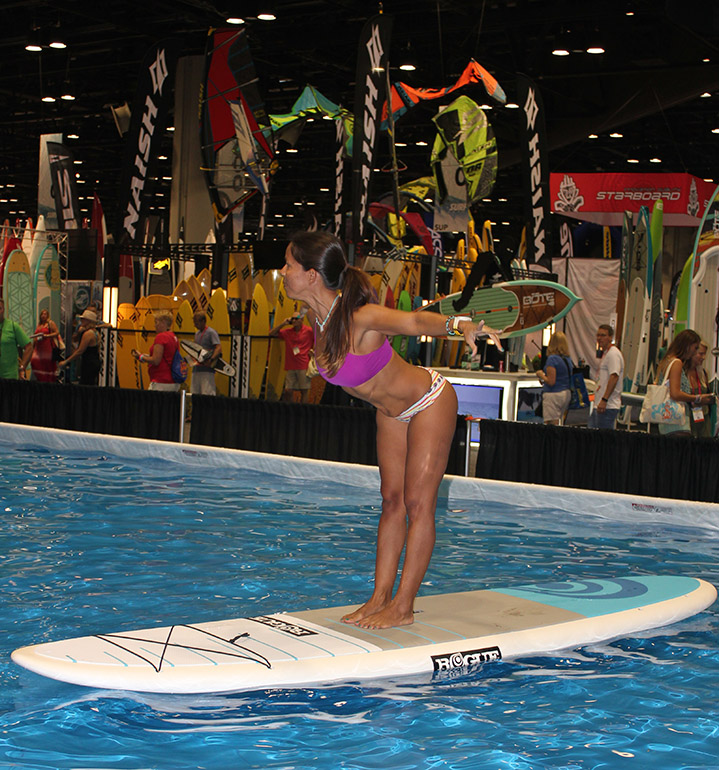 26.  I use PolarPro filters, https://www.polarprofilters.com/ , on my GoPros when there is enough light. They can a marvelous job in restoring some color to the images. 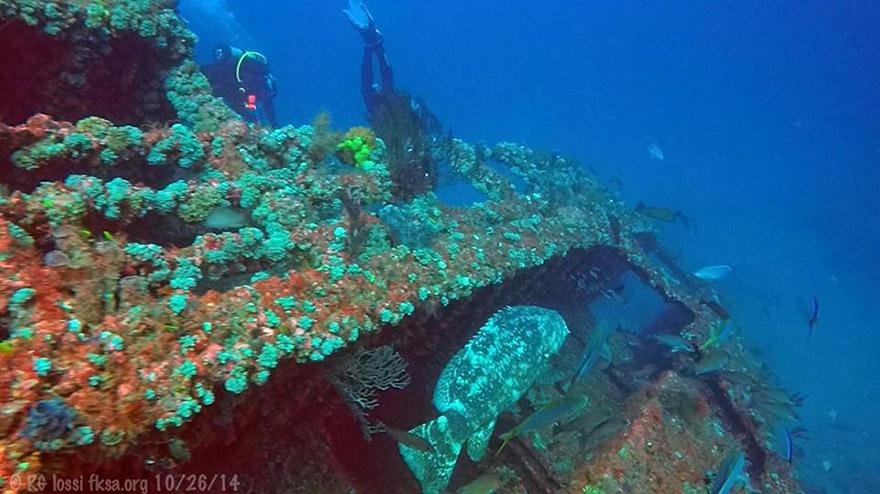 A still shot captured from video on the wreck of the Castor during the goliath grouper aggregation there last year. The Polar Pro red filter really brought some color back considering it was overcast at the bottom was at 110 ft. of water.  39.  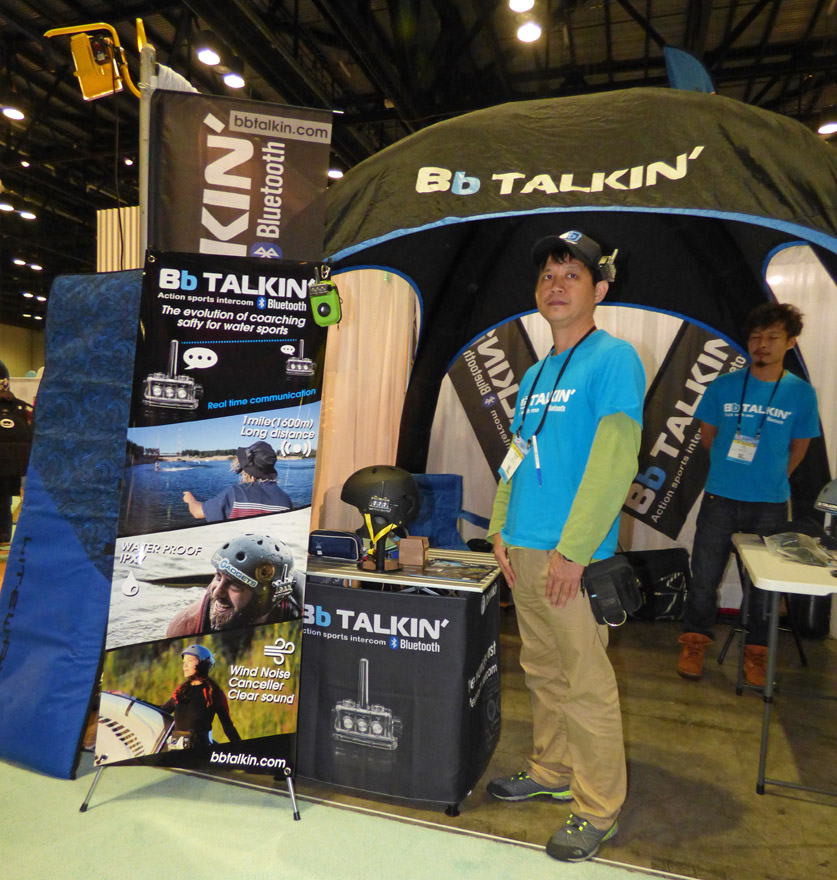 A nice com link from http://www.bbtalkin.com/ for kiting, kayaking, whatever. 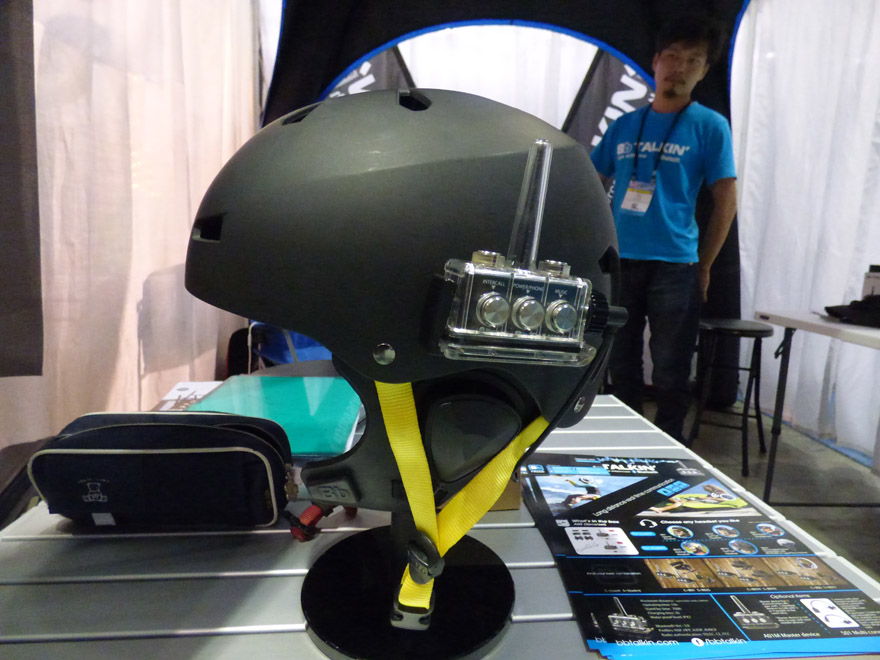   37.  Let's close out with Dre and Derrik of Tona kiteboards. More about the line and the Tona Life at http://tonalife.com https://www.youtube.com/watch?v=0phpBz5zv20 Dre showed me a video clip he put together down on Antigua. It is a very well shot and edited clip including drone imagery and an excellent sound track. Jump on board and checkout the islands, no passport needed https://www.youtube.com/watch?v=I2iVJmNhyNI  Wrapping things up on the runway, rolling out the Chiefs and other models for final applause.  See you Erika, keep up the great work! 30. So, that's a look at some of the gear out there for this year. Be sure to take advantage of the great new products out there and enjoy your time on the water. ################# Summary On January 23, 2016 a Saturday at approximately 12:30 PM a man in his later 50’s suffered a fatal gliding accident while snowkiting on Bald Mountain in Wyoming.  Bald Mountain is near the Wyoming - South Dakota state lines. It has been estimated that he had been kiting for about two years and was very interested in advancing in gliding particularly pulling big air using kiteboarding gear. He had attended a snowkiting summit on the same mountain in December 2015.  Gliding The snowkiting summit was intended to advance the practice of snowkiting, to allow snowkiters to meet one another and exchange ideas. He was familiar with backcountry snow operations from his work. 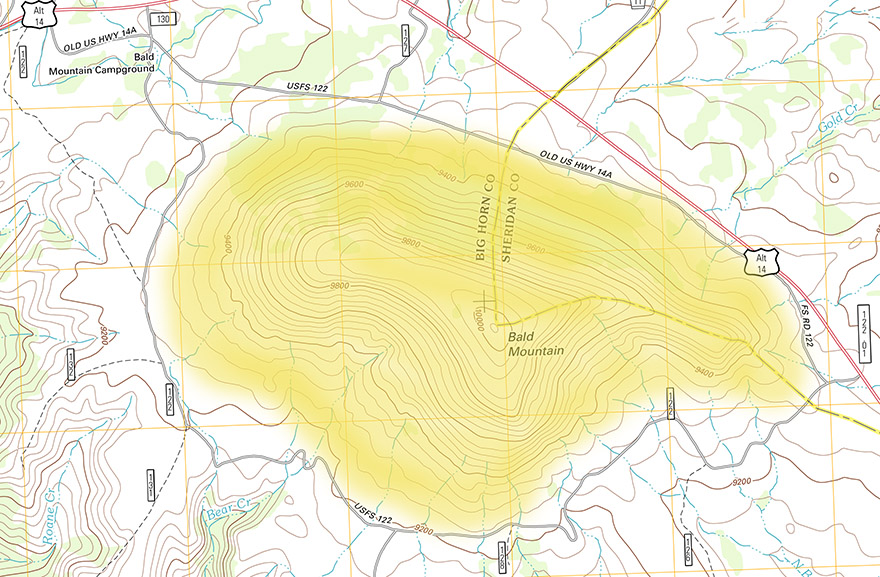 Bald Moutain varies in elevation between 10,000 ft. at the summit and around 9300 ft. NGVD at the base. The wind's were light less than 15 mph, blowing up the slope roughy from a southwest direction. There was some ridge lift evident with a high thin cloud layer. The temperature was about 32 F and warming with a major snow fall in recent days but no snow on this day. The man was observed to be doing 200 ft. long or less glides off small shoulders gaining less than 15 feet off the ground typically. The demands of this scale of flying seemed to be generally within his abilities and experience based upon observer comments. He was flying a 15 m new LEI or "tube" kite. 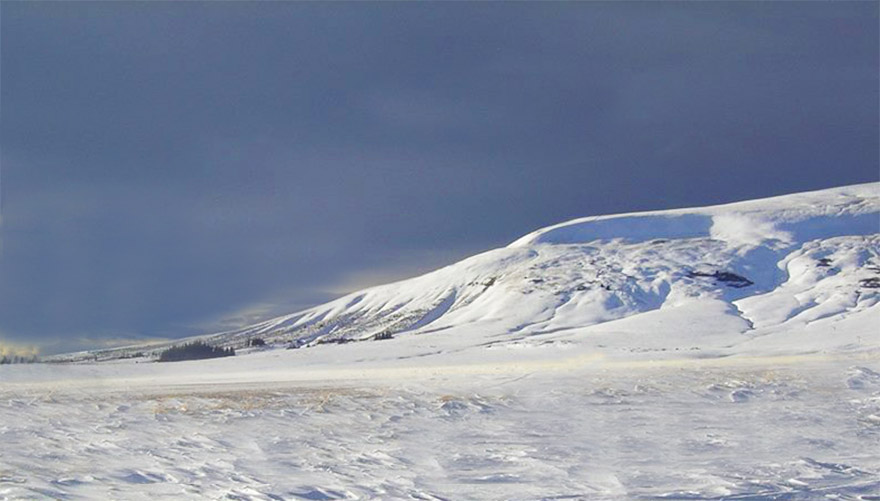 The area of Terminal B on Bald Mountain. After lunch one well experienced snowkiter glider went up to the upper ranges of the mountain on a snowmobile to the area of "Terminal B." They kited from that point up to the area of the cornice of the mountain. The man followed along on his snowmobile and kited up to the same launch area at the top of the mountain. This was substantially higher than where he was kiting earlier in the day and was advanced terrain for gliding. He was approximately 100 feet above where the snowmobile was parked. There was a long gradual slope between those two points. 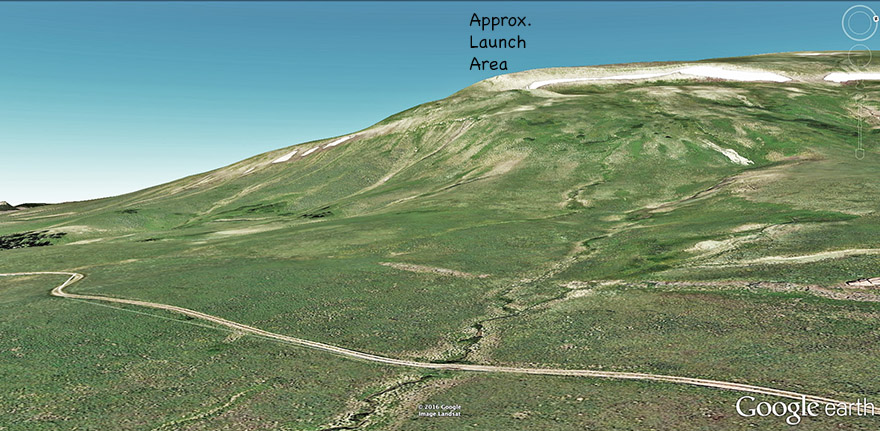 A Google Earth view some the rough location of the man's launch. The well experienced snowkiter had launched, looked back and noticed the man had just launched and was in a slow rotation. The well experienced kiter then lost sight of him. Another kiter (also a EMT) was out of line of sight, about 300 ft. away an heard a kite rushing through the air to slam hard into the ground. Another kiter looking overhead noticed the man's kite off to his side as he was falling rapidly. His kite should have been positioned to near overhead for stable flight. He was seen to be about 30 to 40 feet above the surface when he lost control of the kite. The wind had blown substantial snow cover away exposing bare areas of hard frozen ground where the kiter struck. The EMT-kiter was seconds from where the kite and victim had impacted and rushed over to aid the man first hitting the quick release of both of their kites. The kiter-EMT asked that the another kiter who had come up to call for emergency medical assistance. They were well in the back country delaying easy, rapid response by ground-based emergency services. The kiter-EMT arrived did a primary assessment during the course of which the man stopped breathing. The kiter-EMT started CPR and continued for approximately 45 minutes. First responders arrived at the site by snowmobile within one hour from about 12 miles away after they were called at which time the kiter-EMT turned the man over to them. The exertion required for 45 minutes of CPR was very substantial particularly onsidering the 9000 ft.+ altitude. The kiter-EMT hung in, not willing to give up despite working to near total exhaustion to their credit. The man died at the site as a result of major impact trauma. The man was later transported to a hospital by a medevac helicopter. Analysis Based upon the limited information available it has been concluded that the man may have caught a ski edge as he left the surface putting himself into rotation. He may have panicked and pulled excessively hard on one side of the bar driving the kite downward, losing his lift and sending himself hard into the surface. Another possible explanation is that once the kiter leaves the surface, his skis will "weather vane" cross to the apparent wind. This can result in more rapid rotation but is thought to not have been the cause in this instance. Once the kite leaves the vertical and upward momentum of the kiter dissipates they will fall at speed. It is important to maintain lift when gliding well off the ground usually with the kite overhead and largely undisturbed to aid stable flight. The kite was seen to be low and off to the side of the kiter prior to impact. Snowkiters on skis may rotate around the bar to correct for the backward pull of the kite when leaving the surface. This reverses the normal bar response, e.g. pulling right turns the kiter left vs. what may be the more accustomed direction. This bar rotation may have been a source of confusion and rapid loss of kite control. Some expert kiters have concluded that his judgment was poor in electing to go to the top of the mountain at his ability level. The demands and inherent substantial risks of higher altitude gliding are not to be underestimated although it can be easy to not fully appreciate all the risks. Kiting can seem to be deceptively easy and harmless until something goes seriously wrong. Unconfirmed reported diabetes and indications of low blood sugar might have contributed to this poor judgement. If present, this might have also compromised his ability to effectively respond to the emergency after launch. The man’s kite, bar, lines and quick releases were examined for proper function. They were found to be properly inflated, correct and working properly. He was wearing a substantial climbing harness in lieu of a weaker kiteboarding harness as is becoming more common among snowkiters. Commentary Gliding or soaring at altitude over land or hard, unyielding surfaces with kiteboarding gear is inordinately dangerous given the harm it can cause upon accidental impact. "Altitude" as used in this application would mean a height at which serious injury might occur from. Weaknesses in the gear and sudden failure potential in this setting can present the pilot with dangerous situations which he can't control. Some are trying to improve the serviceability and durability in a few of the kite system components but have been unable to address all excessively vulnerable aspects of the kite system. Lack of training and gaining essential knowledge about flying, weather, mechanical turbulence, launch, landing area considerations only make it more so. This accident appears to have been a case of poor choices including launching so high in the first place and pilot error. The later factor resulted in poor kite control leading to loss of sufficient lift and a fatal impact with the ground. Currently, there are few kiteboarders engaged in gliding and a very short list with a high degree of aptitude. So, the comments in this analysis apply to a fairly small number of the current overall kiteboarding population. Paragliding and hang gliding have been around for many decades and require proper training, certification, maintenance of a log book and use of safety gear developed over a long time from numerous severe accidents. You might have system failures and may still have a chance of returning to earth in one piece with hang gliding and paragliding gear given redundancies, established procedures and safety systems. Paragliding or hang gliding are the logical choices for flying high over land for many reasons. You can still be badly hurt in these activities as well, the probability if properly pursued is simply less than with kiteboarding gear when used in similar settings. Kiteboarding gear isn't designed for this type of service, numerous system components can potentially break particularly under the major loads this activity brings. In 18 years of kiting I have had multiple failures of most components of the kiting system over water many of which could have resulted in an out of control fall to earth and serious injury or death over land. Over water such failure often isn't that great of a problem, things can be different over land in the wrong conditions. In fairnesses, high speed impacts against water have also caused injury over the years, notably in extreme conditions in the recent King of the Air competition in South Africa. Regarding existing kite system performance, you have only four kite retention lines, if any one breaks or associated pigtails, bridles or leader lines fail, you may fall at high speed to the surface. If the kite tears, loses bladder pressure, your chicken loop, spreader bar, ends or harness break, again you may well fall at speed to the surface. You don't have to be that high above a hard or unyielding surface to suffer major trauma upon impact particularly if falling at speed. There is little redundancy in conventional kiteboarding gear and virtually no functional safety systems in common use in kiting which might aid a glider pilot in a crisis while aloft. There are emergency parachutes that might work but they require a minimum elevation above the ground to have sufficient time and space to be deployed. This amounts to hundreds of feet of altitude potentially. A variety of factors govern the successful use of emergency parachutes, deploying one doesn't assure proper function and a safe descent. The long flight lines in kites compared to paragliding rigs also introduce potential control, stability and correction issues. It can take more time and drop in altitude to correct a flight problem with a kite setup vs. a paraglider rig with much shorter lines. Gliding with kiteboarding gear may appear easier and more doable than it actually is in the long term. People can be easily deceived by the apparent simplicity. This has been a problem in water-based kiteboarding for many years as well. The reality is that skill won't compensate for some of the problems that can readily arise in gliding over land with kiting gear. Some people may attempt gliding with kiteboarding gear over land despite the obvious hazards and likely severity of injury should things go wrong. In the case of hang gliding and paragliding, a national training organization was created for proper flier training and certification. This essential training in flight theory, weather, emergency management, safety systems, hands on flying in tandem and solo, take off, landing, flaring, reserve chute deployment, etc. etc. had a huge impact on accidents and fatalities and still does today. Where is this information and formal training available for kiters who glide? Given the current low numbers of kiteboarders interested in this activity and the inherent hazards using gear never intended for such service and related liabilities it seems unlikely that a formal training organization to certify kiters will be in the offing anytime soon. This is unfortunate but it is the way it seems to be for now. Anyone contemplating gliding with kite gear at dangerous altitude or over hard, unyielding surfaces should accept that such a choice could readily result in their death or severe injury regardless of their approach and preparation. People who have been gliding for a while advise; learning slowly with willing qualified mentors, taking a slow "crawl, walk, run" approach in trying to master basic to more challenging tasks and not leaping ahead too quickly. Learning on your own may well see you in the papers as news worthy accident. Gaining USHGA/USPGA certification to at least the second level would be a good thing. They also advise staying LOW over well adequate soft snow terrain to where a fall won't cause injury. They described skimming the surface in this approach. If the terrain isn't soft and deep enough, don't glide they said. Some have said no matter how tempting and "easy" flying high over the land may seem, just don't do it. If you want to fly at altitude, many have said to train and become certified to paraglide or hang glide and use that equipment. Some object to the cost and mandatory training/certification in these activities. If you die or become seriously disabled as a result of an avoidable accident, such objections can fade to insignificance. I became certified to hang glide in the early 1990's, before kiting, and learned a great deal about not theory, applied knowledge, hands on flying, dealing with emergencies and still more. I can't imagine flying over land without similar knowledge, whatever the activity. Flying "blind" with regard to the forces, environment and hazards you are in is bad proposition, add in gear subject to sudden failure and things become even more unfavorable. Such knowledge doesn't assure safety but it can certainly help. Last edited by ricki; 04-13-2017 at 03:31 PM. |
 |
|
|